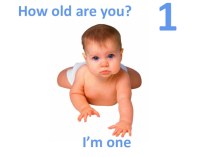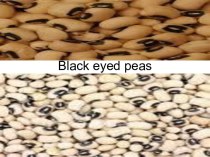- Главная
- Разное
- Бизнес и предпринимательство
- Образование
- Развлечения
- Государство
- Спорт
- Графика
- Культурология
- Еда и кулинария
- Лингвистика
- Религиоведение
- Черчение
- Физкультура
- ИЗО
- Психология
- Социология
- Английский язык
- Астрономия
- Алгебра
- Биология
- География
- Геометрия
- Детские презентации
- Информатика
- История
- Литература
- Маркетинг
- Математика
- Медицина
- Менеджмент
- Музыка
- МХК
- Немецкий язык
- ОБЖ
- Обществознание
- Окружающий мир
- Педагогика
- Русский язык
- Технология
- Физика
- Философия
- Химия
- Шаблоны, картинки для презентаций
- Экология
- Экономика
- Юриспруденция
Что такое findslide.org?
FindSlide.org - это сайт презентаций, докладов, шаблонов в формате PowerPoint.
Обратная связь
Email: Нажмите что бы посмотреть
Презентация на тему Medical biotechnology
Содержание
- 2. Insulin - první gen biotech 1982
- 3. Recombinant proteins for human use~2003Approved in US or EU
- 4. Recombinant interferon: isolation of cDNAStrategies for isolating
- 5. Hybrid products: INFInterferons assist the immune
- 6. Site-specific directed mutagenesis: hGHhGH: 191 AAc,
- 7. Optimizing gene expressionMultistep process:Design a protein,
- 8. Cystic fibrosisGenetic disease affecting lungs and
- 9. TreatmentGenentech: hDNase I in CHO cellsNot
- 10. Optimizing treatmentAnother symptom,In response to bacteria
- 11. Clearing the lungs 2 with alginate
- 12. Cloning alginate lyaseFlavobacterium sp.Clone bank in
- 13. Alginate lyase[s]ORF 69,000 DaPrecursor of three
- 14. Optimization of activityIncrease expression of 40,000
- 15. Phenylketonuria (PKU)Autosomal recessive genetic disorder in
- 16. Phenylketonuria treatment[s]Traditional treatment: diagnosis at birth
- 17. Monoclonal antibodies (mAb) as therapeutic agentsMouse
- 18. Antibody molecular structureCDRs variable portions of
- 19. Polyclonal antibodies (Ab)www.abbottdiagnostics.com/Science/pdf/learning_immunoassay_01.pdf
- 20. Monoclonal antibodies (mAb)www.abbottdiagnostics.com/Science/pdf/learning_immunoassay_01.pdf
- 21. Monoclonal antibodies (theoretical)Monoclonal Antibodies: A Manual of Techniques. HZola
- 22. Monoclonal antibodies (mAb) protocolwww.abbottdiagnostics.com/Science/pdf/learning_immunoassay_01.pdfMonoclonal Antibodies: A Manual of Techniques. HZola
- 23. Herceptin®“Magic bullet”Genentech. FDA 9/98; Aullrich/Genentech and
- 24. Magic bullet: delivery of drug to
- 25. Magic bullet: delivery of active agent to siteBinding of mAb requires second stepvariations
- 26. Priklad ANTISENSE delivery
- 27. Human mAb problemDrawbacks to immunotherapeutic agents
- 28. Hybrid human-mouse mAb: chimericGenetic engineering to
- 29. Hybrid human-mouse mAb: chimericEx., chimera of
- 30. Jak je to delano
- 31. Hybrid human-mouse mAb: humanizedHumanized AbSubstitute CDRs
- 32. PCR amplification of CDRPrimers are hybrids,
- 33. E. coli production of mAb: phage
- 34. DNA constructs of Fv combinatorial gene
- 35. Combinatorial library in M13PCR amplify VH and VL separatelyAdd linkerLigate into M13 genomeDisplays on surface
- 36. Phage DisplayDisplay peptide or protein on surface
- 37. http://www.biochem.unizh.ch/plueckthun/teaching/Teaching_slide_shows/filamentous_phages/index.htm5 copies of pIII and pVI 2800 copies pVIII - all can accommodatepeptides
- 38. www.neb.com/nebecomm/products/productE8100.asp
- 39. Combinatorial library in M13Assay expressed mAb
- 40. Shuffling CDR sequencesVery large libraries yield
- 41. Using PCR to Detect for HIVRT-PCR (reverse
- 42. RT-PCR Diagnosis of HIV
- 43. Using PCR to Detect for HIVSpecific primers
- 44. Polymorphic refers to the existence of two
- 45. SNPs are the 3.2 million single nucleotide
- 46. http://press2.nci.nih.gov/sciencebehind/snps_cancer/snps_cancer/snps_cancer13.htmSNPs
- 47. How do we identify SNPs?DNA microarrays (DNA
- 48. How Are Microarrays Made?Short fragments of DNA
- 50. Whole Human Genome Microarray by Agilent Technologies1” x 3” glass slide with 44,000 genes dotted
- 51. What Can SNPs Be Used to Predict?
- 52. A person’s susceptibility to disease is linked
- 53. http://press2.nci.nih.gov/sciencebehind/snps_cancer/snps_cancer/snps_cancer25.htm
- 54. http://press2.nci.nih.gov/sciencebehind/snps_cancer/snps_cancer/snps_cancer38.htm
- 55. Drug Dosing/Reaction
- 56. Average patientThere is no simple way to
- 58. http://press2.nci.nih.gov/sciencebehind/snps_cancer/snps_cancer/snps_cancer36.htm
- 59. Testing for VariationCytochrome p450 (CYP450) involved in
- 60. CYP3A CYP2D6 Antihistamines CodeineStatins Beta-BlockersCa+ Channel Blockers Tricyclic AntidepressantsBenzodiazepines TamoxifenHIV protease inhibitorsCYP2C9 CYP2C19
- 61. Herceptin targets HER2 & is effective in
- 62. 1733 Genes84 breast tumor samples http://www.ncbi.nlm.nih.gov/books/bv.fcgi?rid=stryer.figgrp.832Red =gene
- 63. http://history.nih.gov/exhibits/genetics/sect3.htmRecombinant DNA Drugs
- 64. http://dept.kent.edu/projects/cell/IMAGES3.HTMChinese Hamster Ovary CellsMost popular cells for
- 65. http://www.nbsc.com/ferm_eq/bf6000.aspMammalian Cell Bioreactor
- 66. Protein Drugs Made in CHO CellsAvonex (Interferon
- 67. GENE THERAPY
- 68. Gene TherapyCells are removed from a patient
- 69. Jak je to delano,priklady, doplnit
- 70. http://www.jeansforgenes.com/images/2070_illustration.gif
- 71. Gene-Therapy and SCIDsSevere Combined Immune Defiency (SCID):
- 72. Current State of Gene TherapyLittle progress has
- 73. In 2003, the FDA placed a temporary
- 74. Stem Cells
- 75. Stem cells are unspecialized cells that renew
- 76. Three Types of Stem CellsEmbryonicAdult/SomaticInduced Pluripotent
- 77. In 1998, human embryonic stem cells (hES)
- 78. http://www.csa.com/discoveryguides/stemcell/images/pluri.jpg
- 79. Therapeutic CloningIsolation of cloned cells/tissue for curing
- 80. http://www.advancedcell.com/testimony-12-4-2001.html
- 81. An adult or somatic stem cell is
- 82. 1960s, two stem cell populations identified in
- 83. http://www4.od.nih.gov/stemcell/figure2cropbig.gifBone Marrow Stem CellsMesenchymal
- 84. Tissue Engineering
- 85. Tissue engineering or regenerative medicine is a
- 86. http://txtell.lib.utexas.edu/stories/media/t0003-2.htmlGeneration of Replacement Knee Cartilage
- 87. http://navier.ugent.be/public/biomed/research/kris/res_kris.phpValvular heart disease is a major cause
- 89. Скачать презентацию
- 90. Похожие презентации
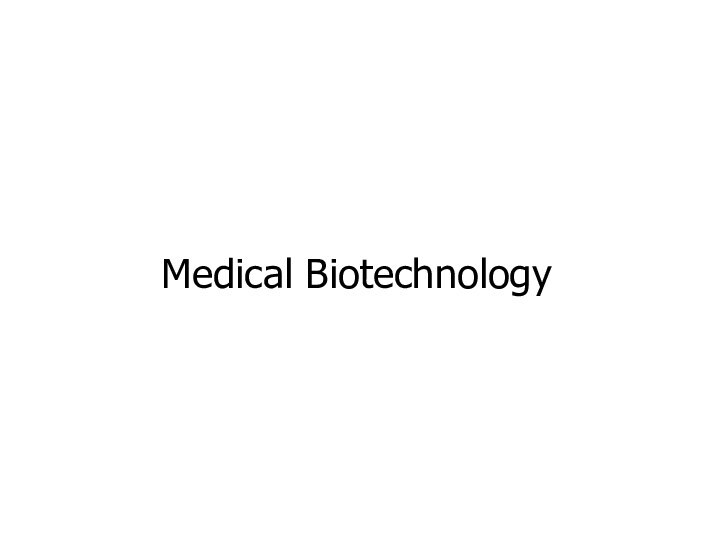
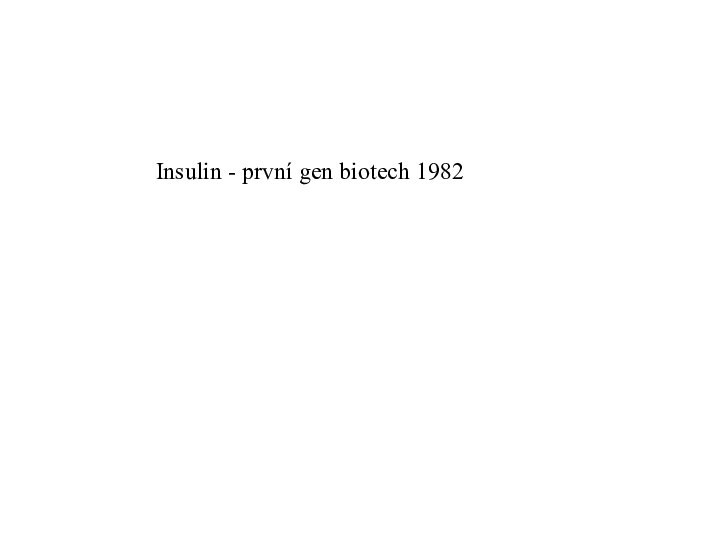
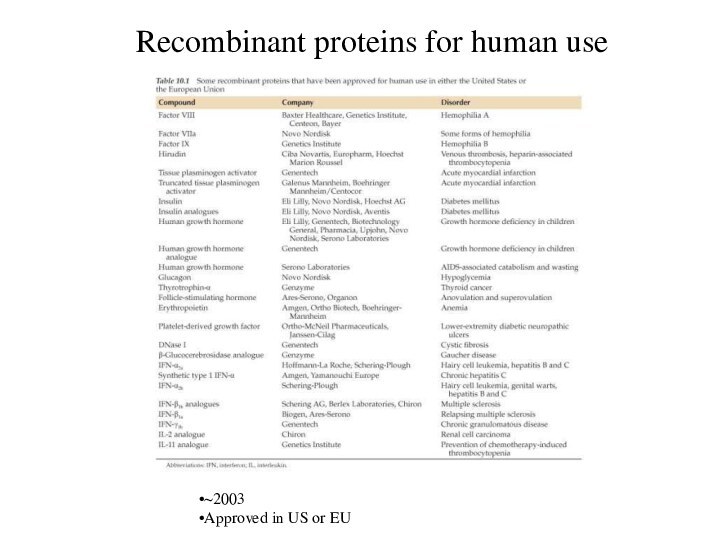
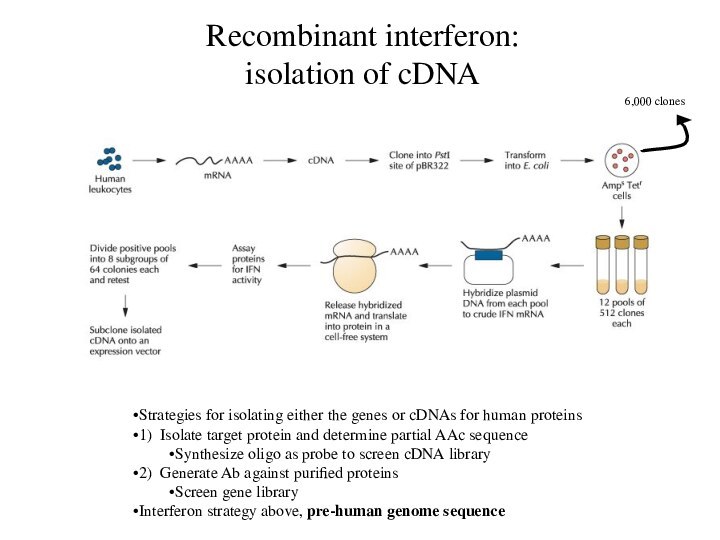
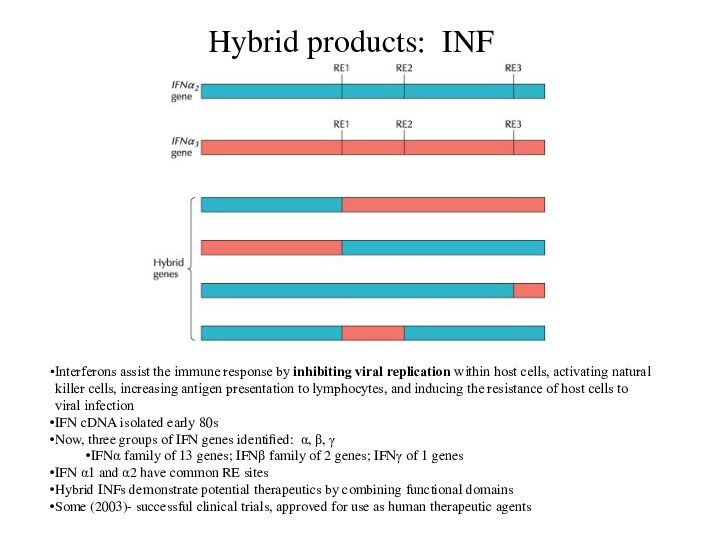
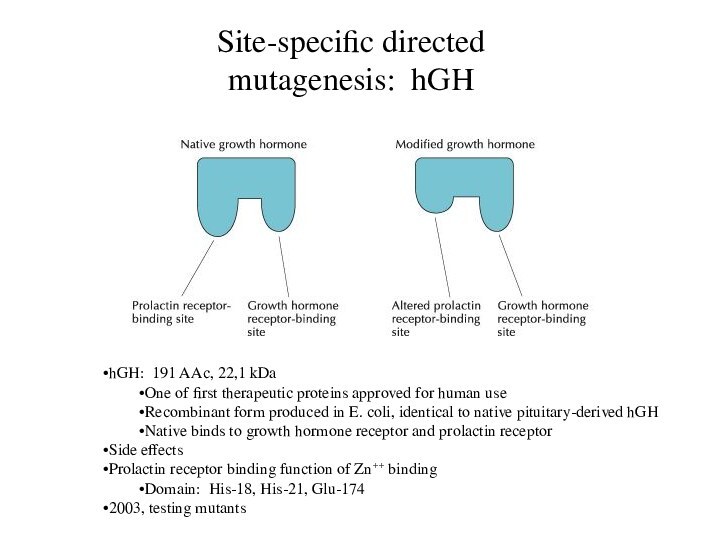
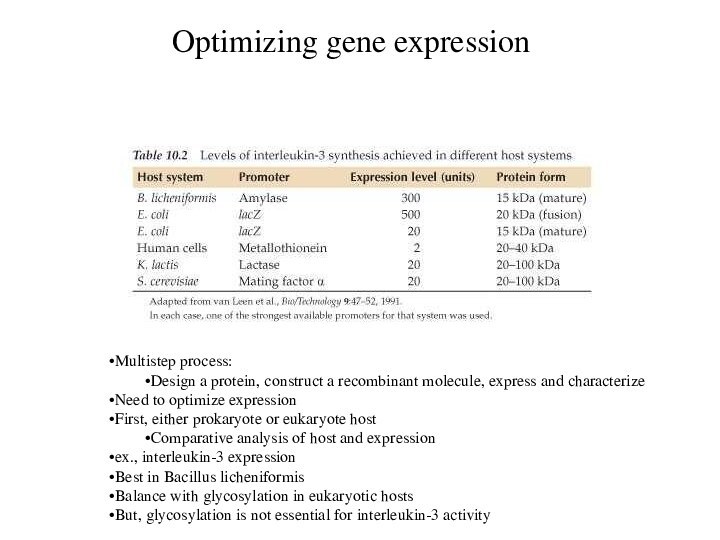
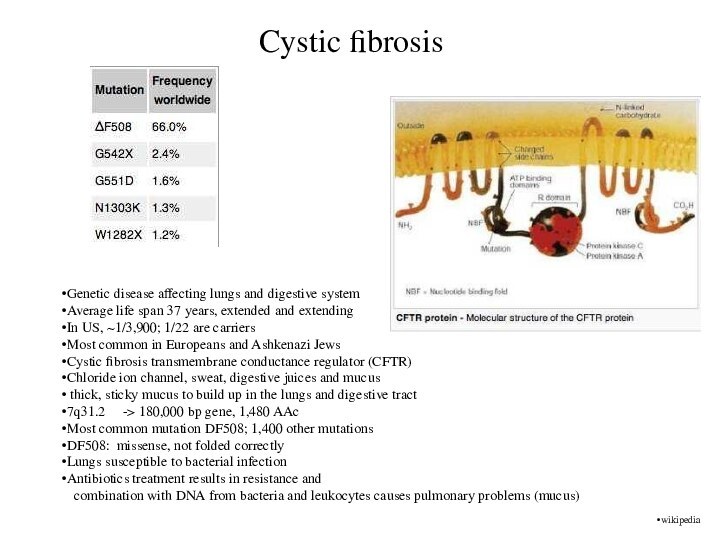
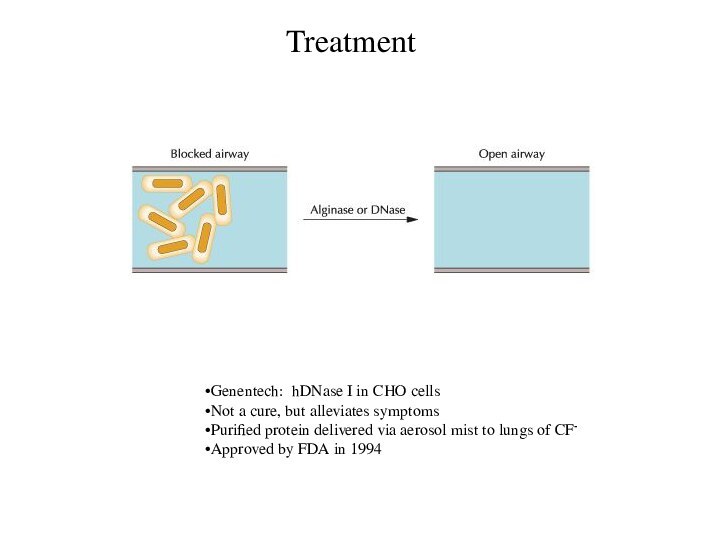
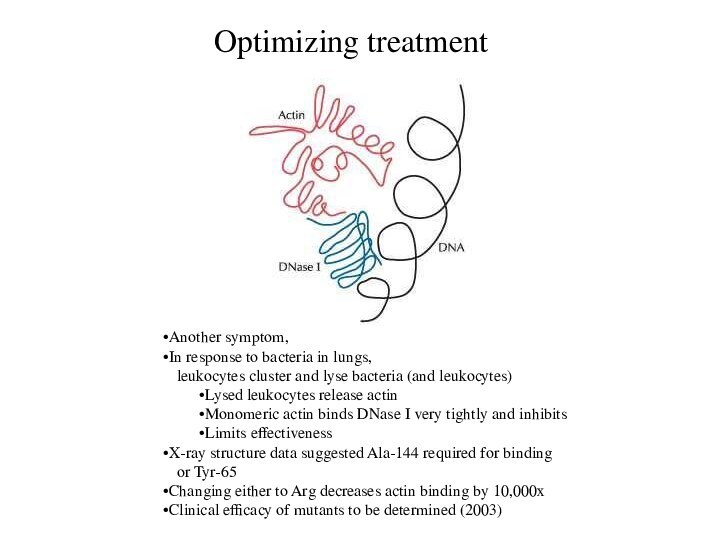
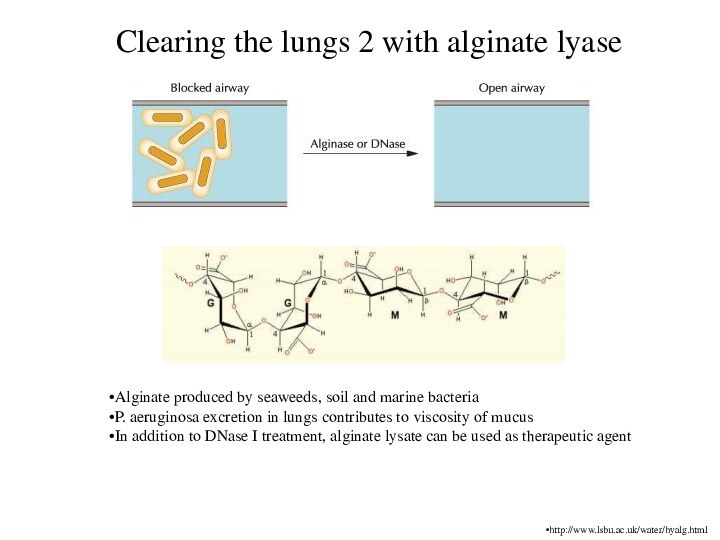
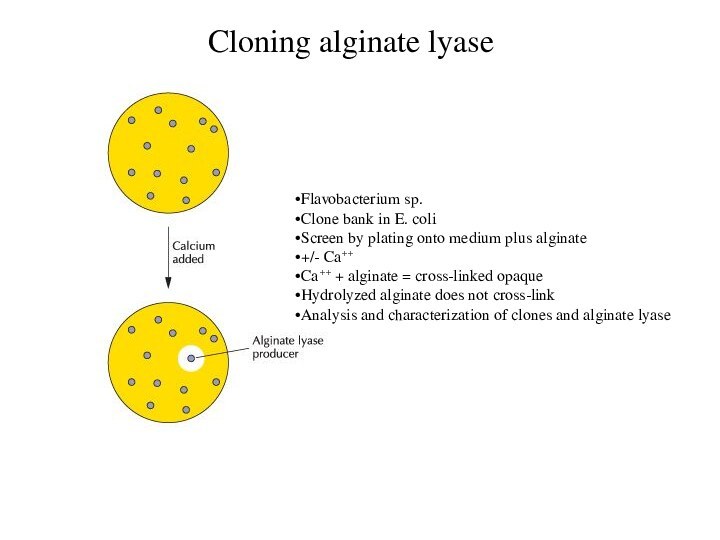
![Medical biotechnology Alginate lyase[s]ORF 69,000 DaPrecursor of three alginate lyases-> 3,000 Da +](/img/tmb/14/1314821/389fff43324eeb6bede69427f523b48a-720x.jpg)
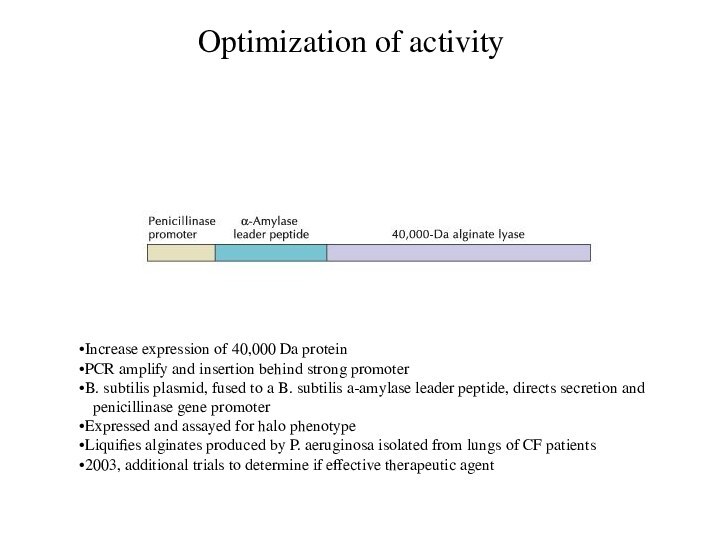
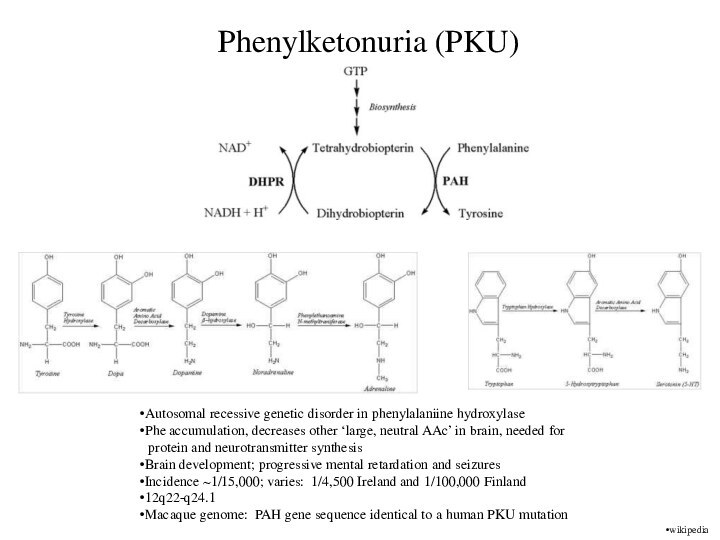
![Medical biotechnology Phenylketonuria treatment[s]Traditional treatment: diagnosis at birth or prenatalControlled semi-synthetic diet with](/img/tmb/14/1314821/d94d4171b73d647fac81ca88a549ab25-720x.jpg)
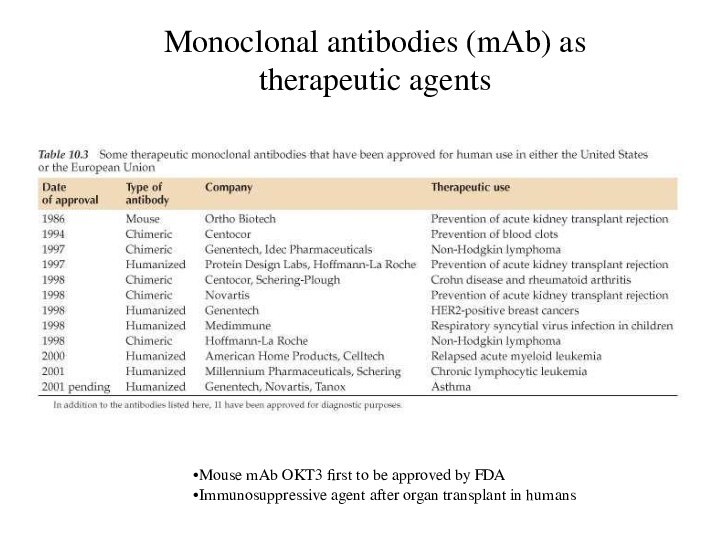
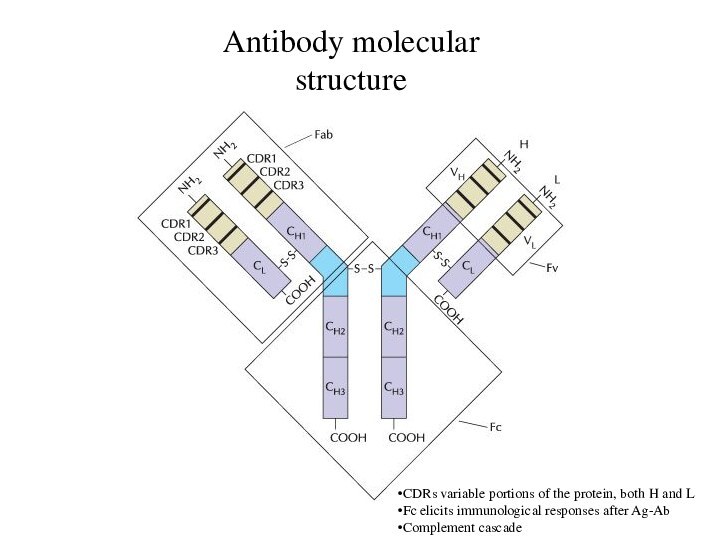
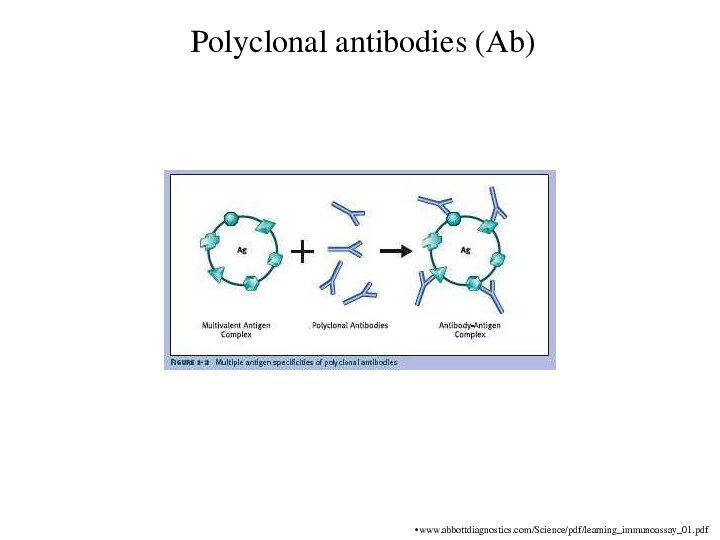

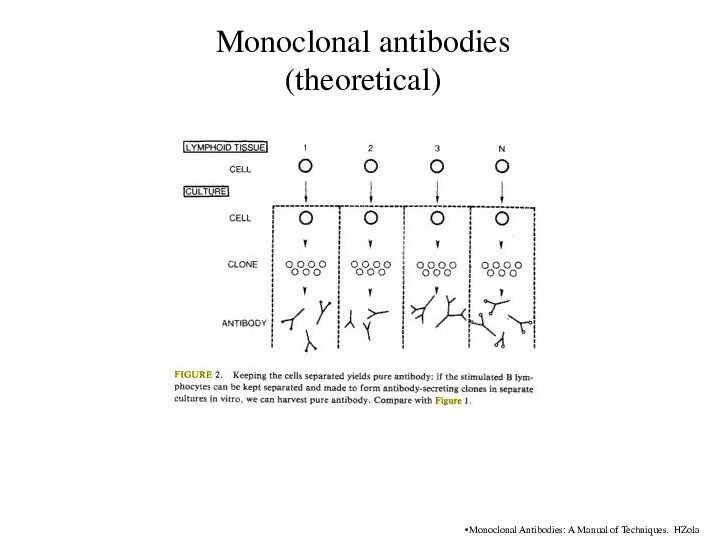
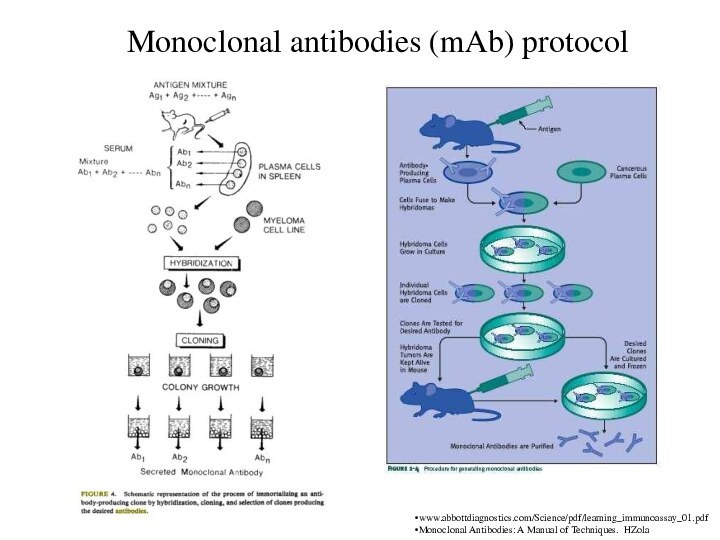
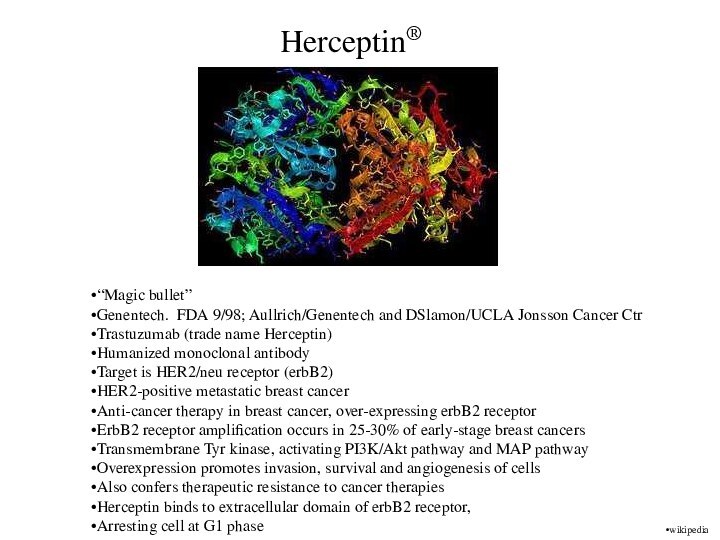

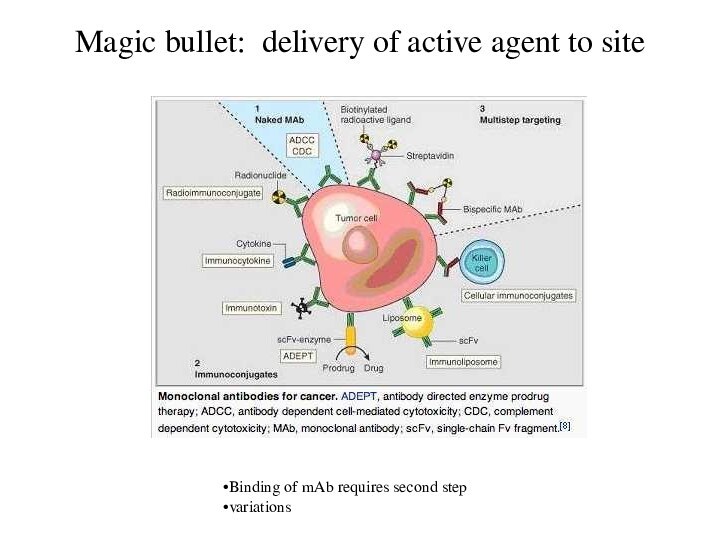
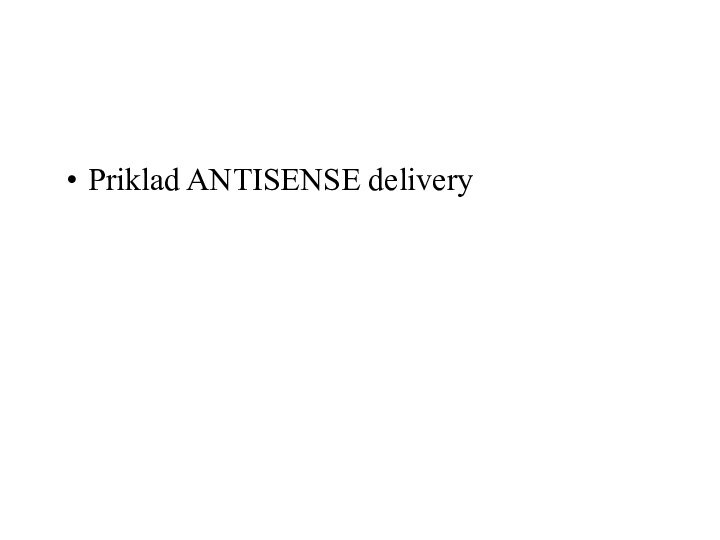

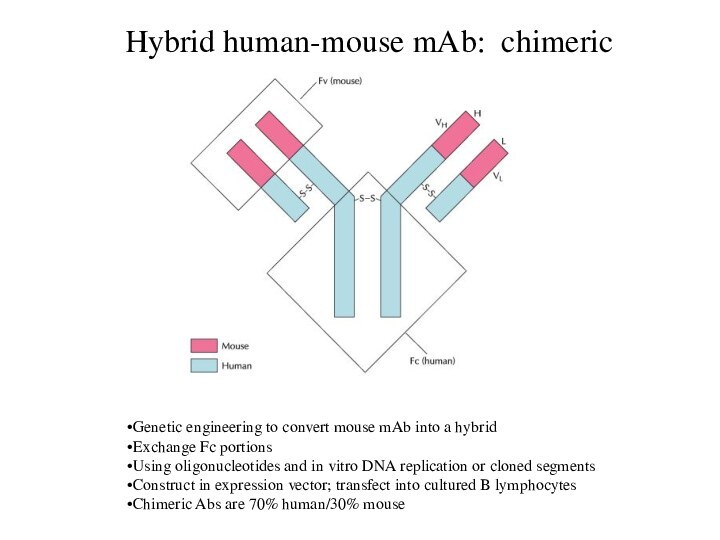
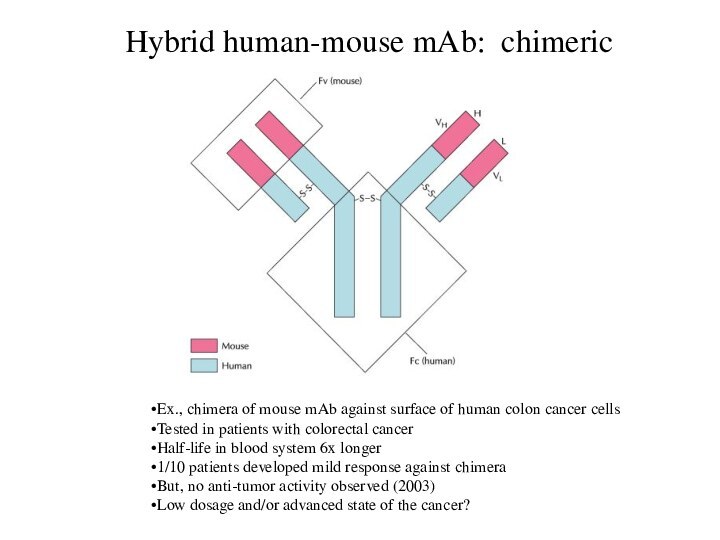

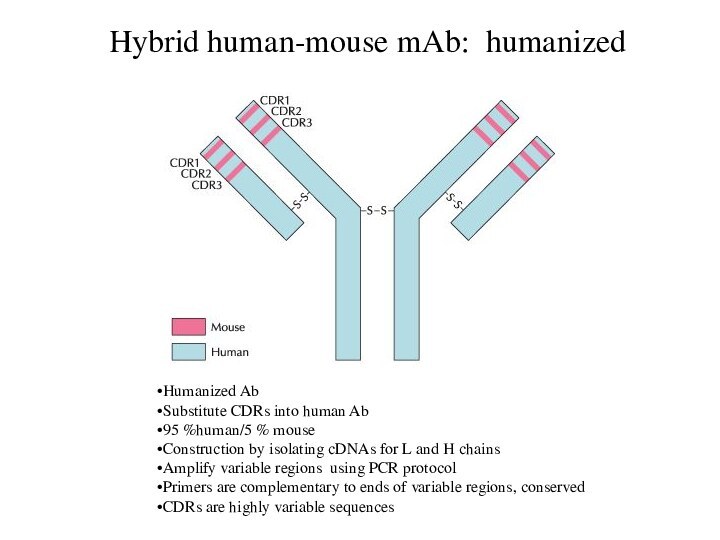
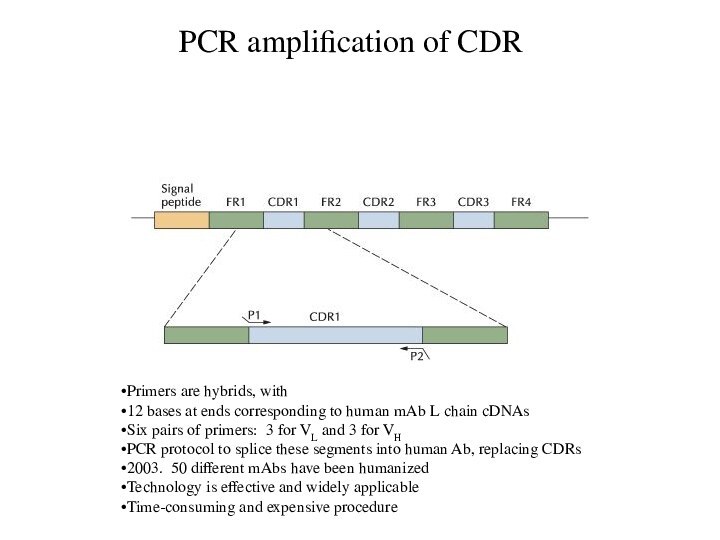
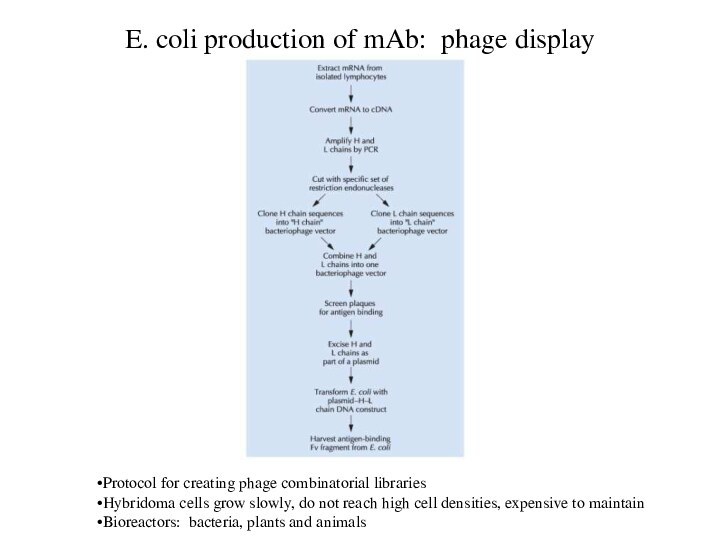

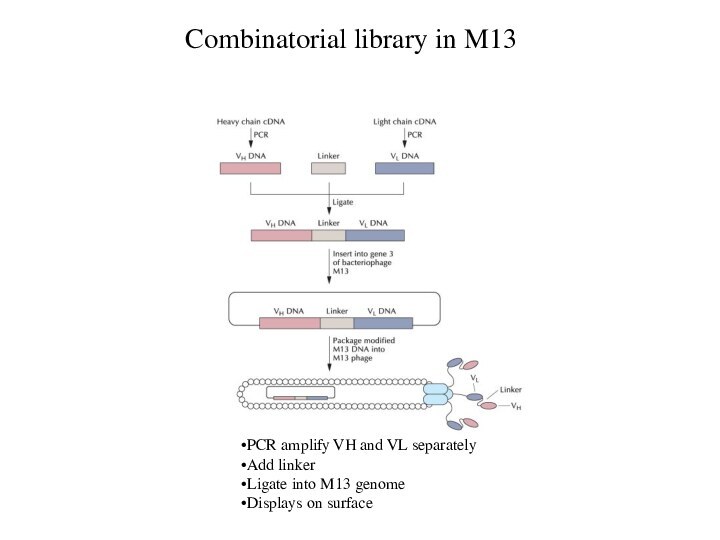

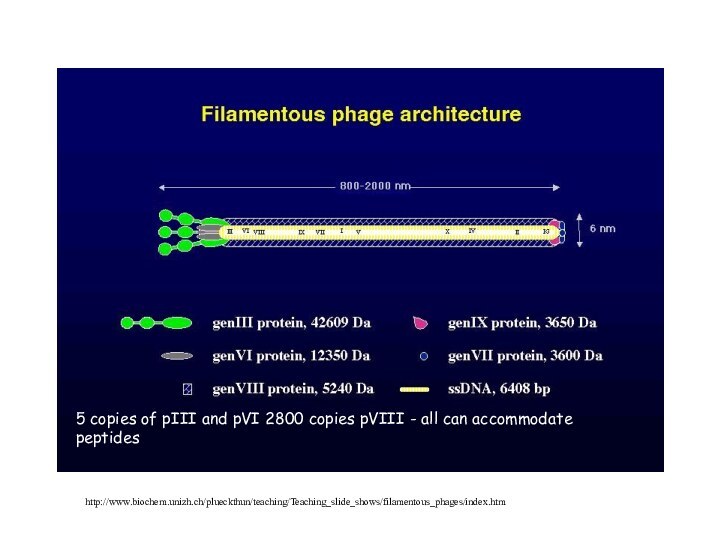
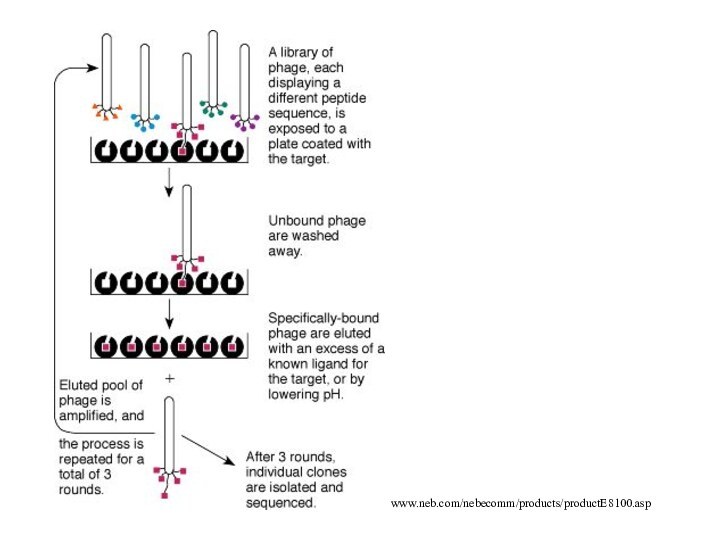
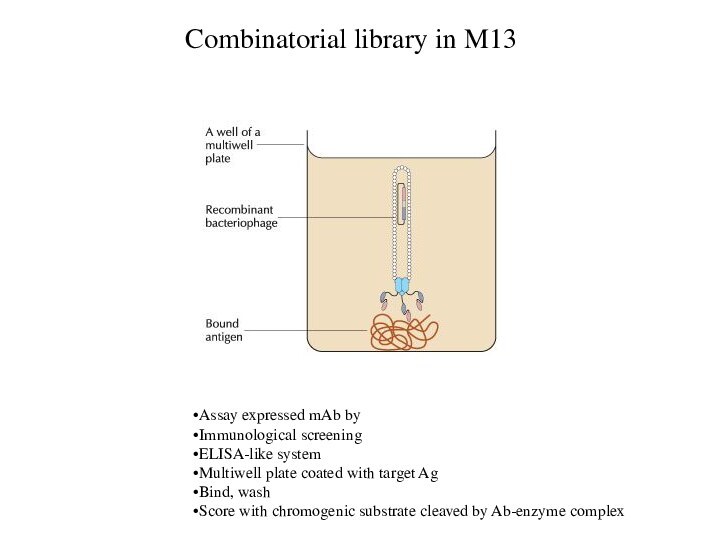
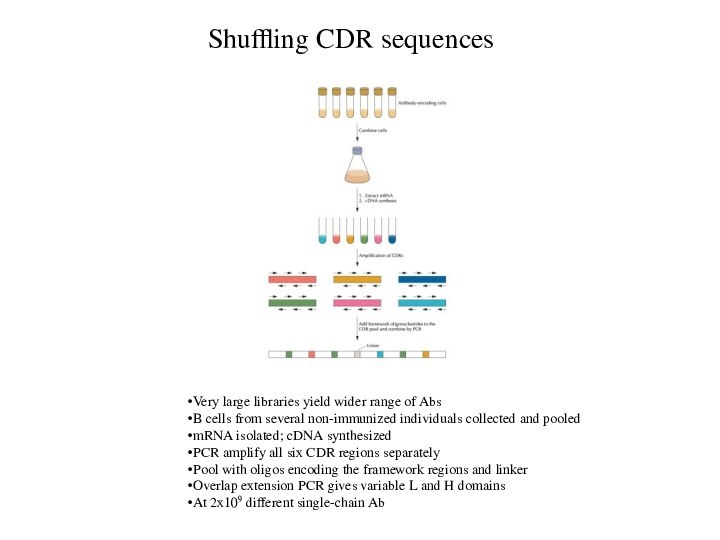
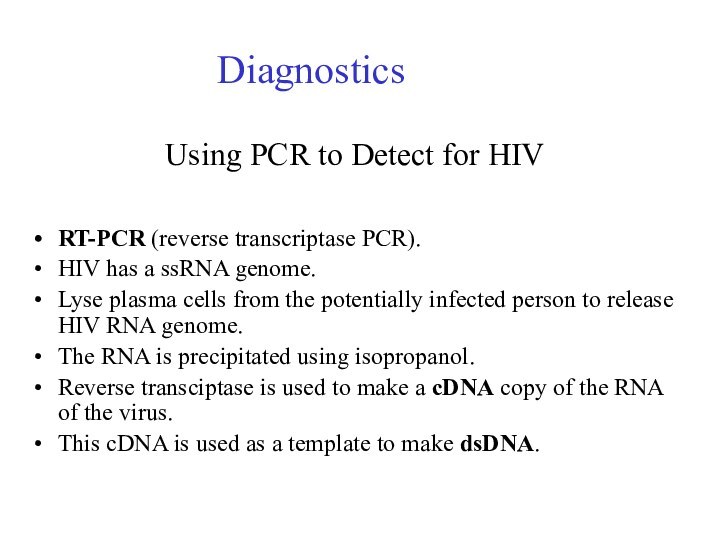
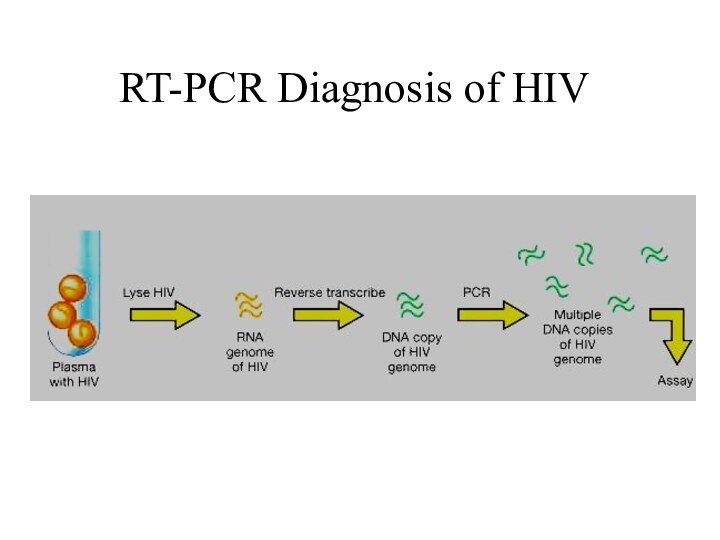
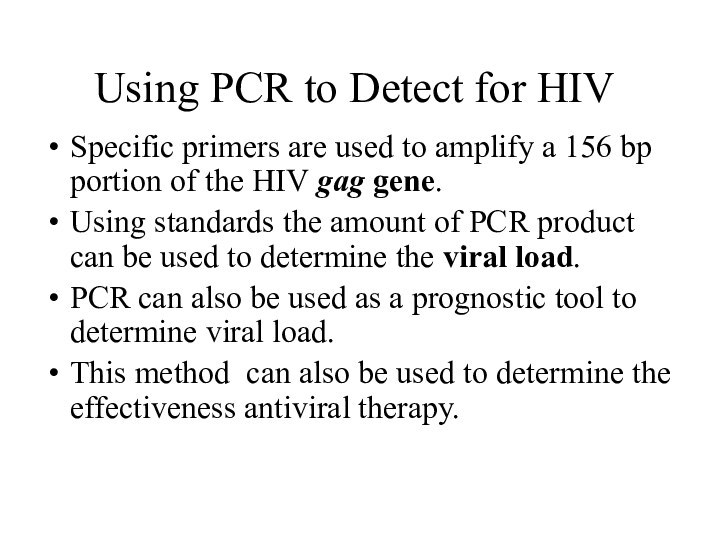
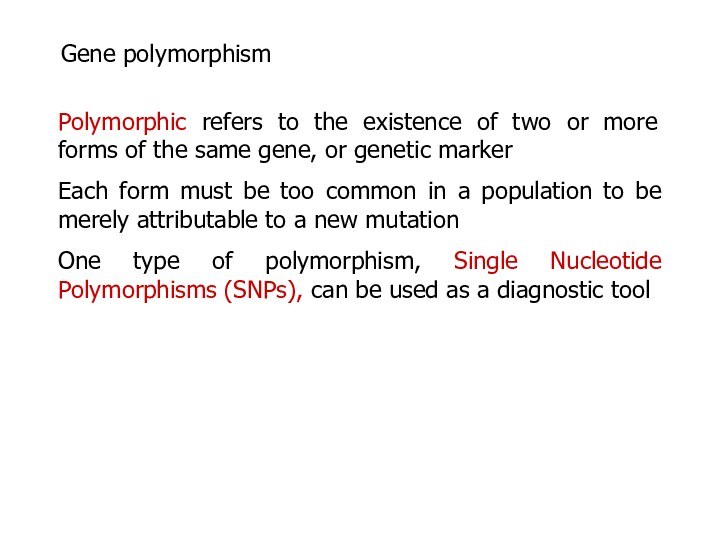
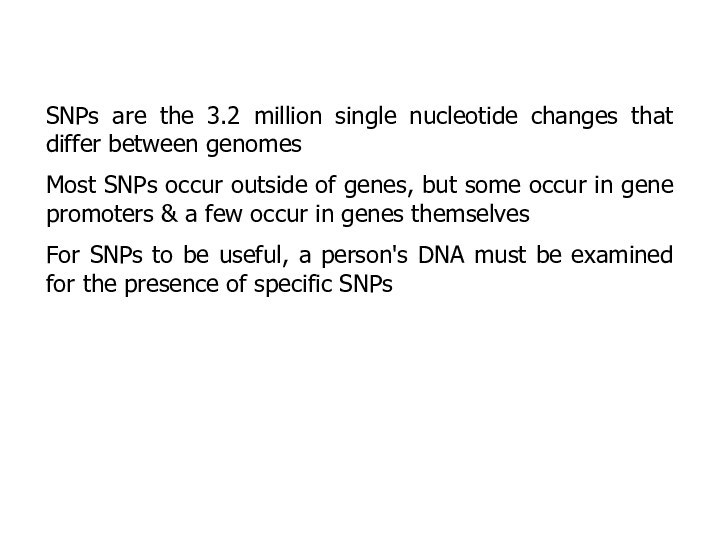
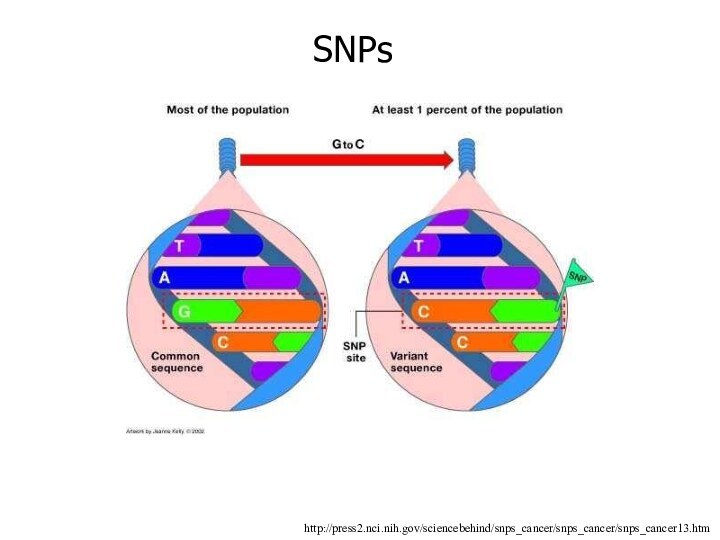
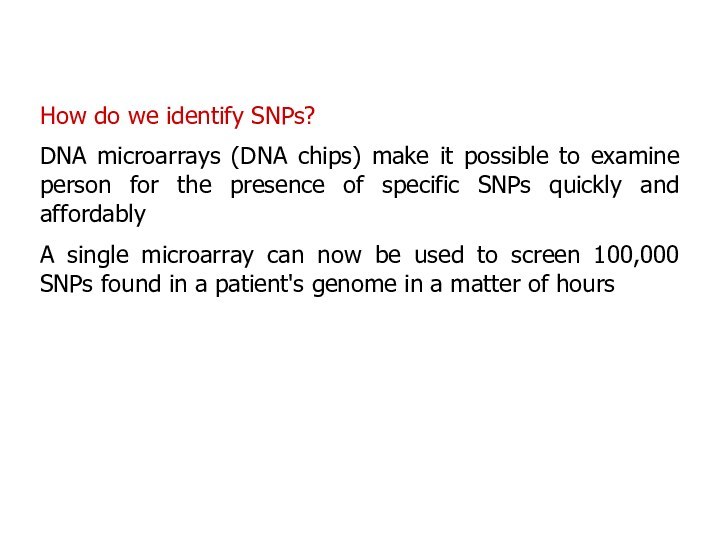
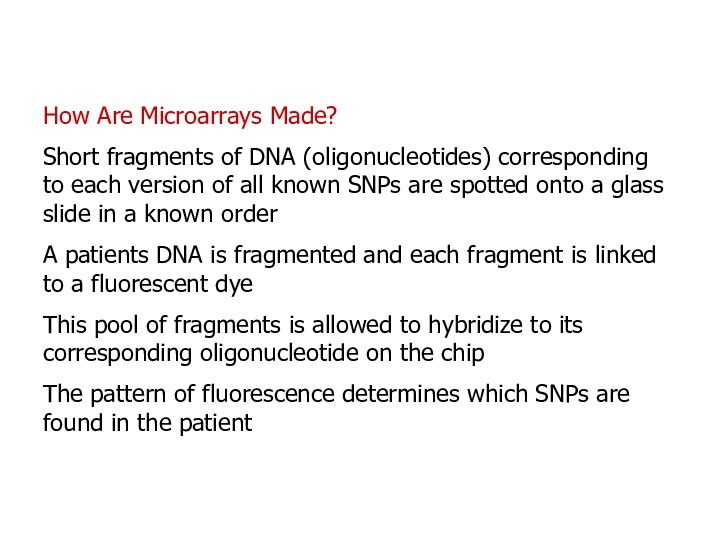
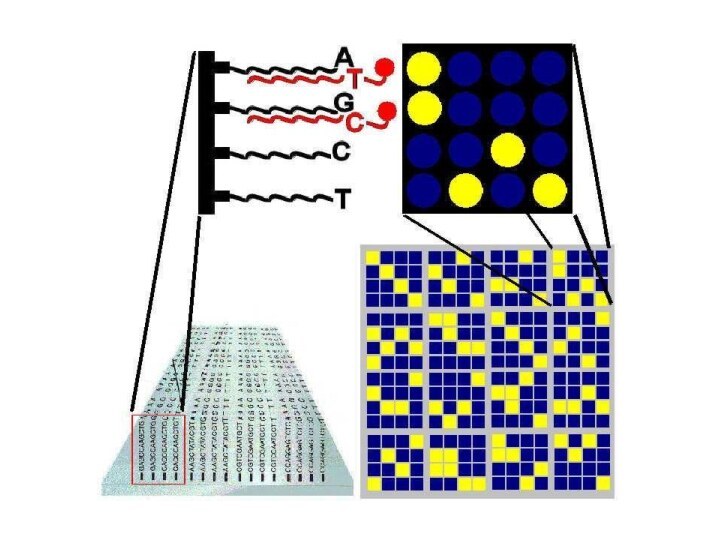
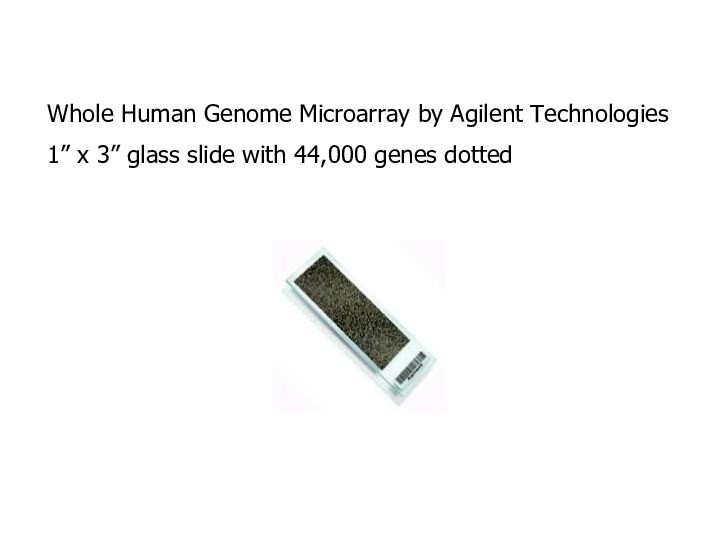

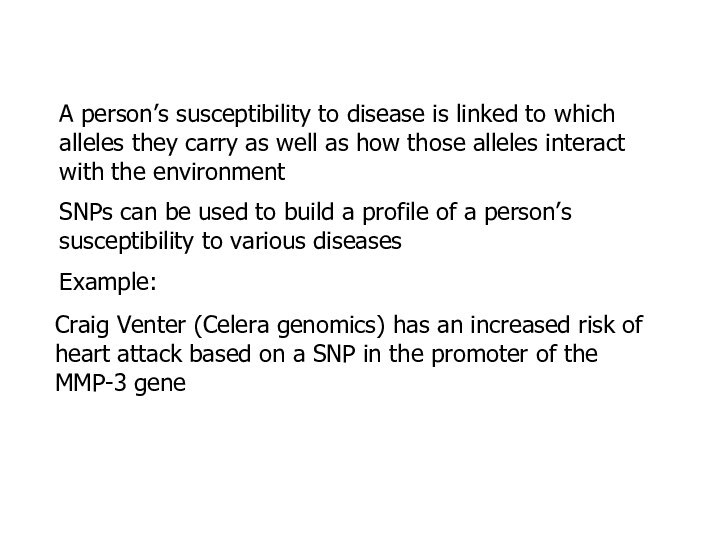
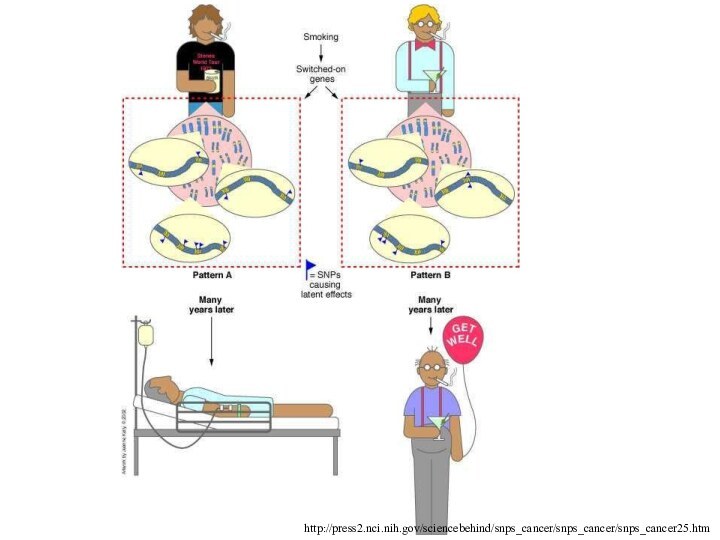

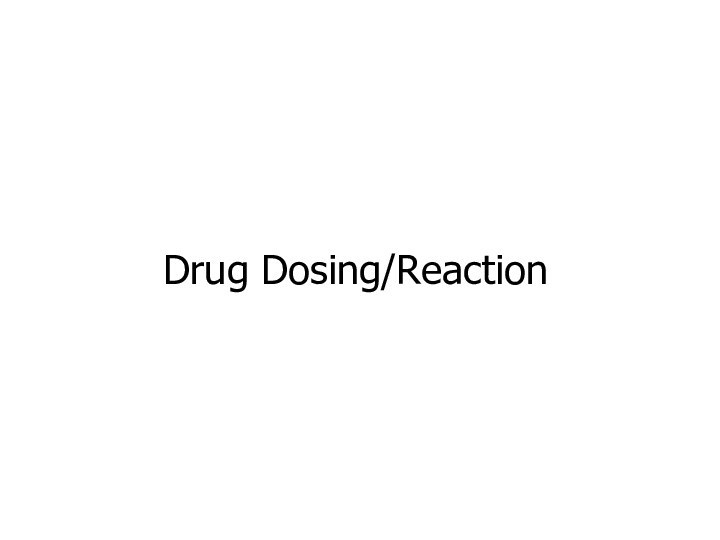
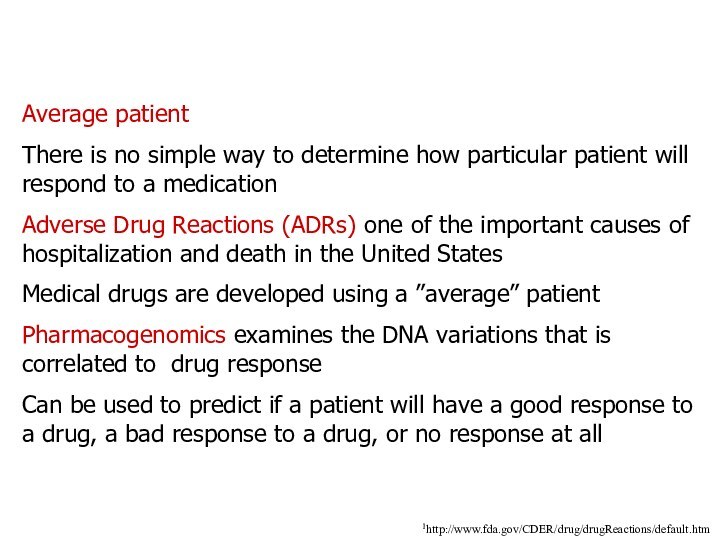
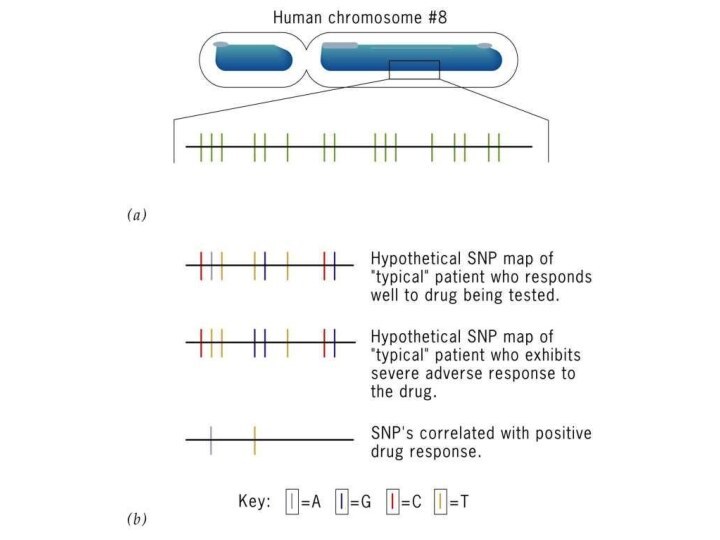



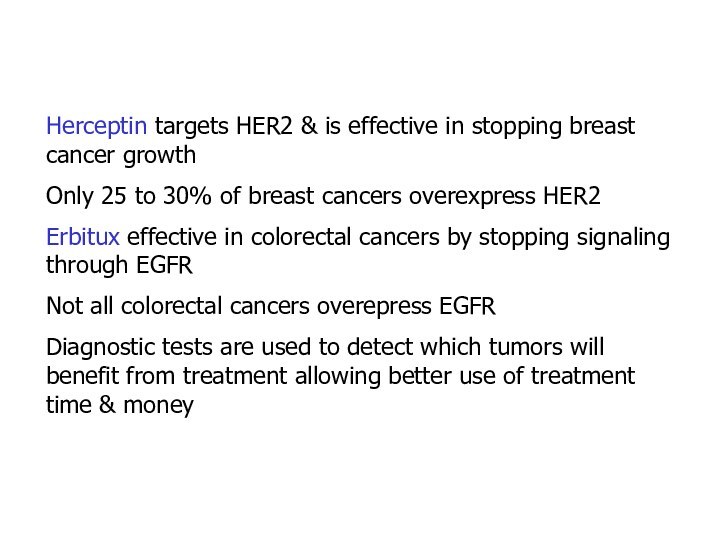
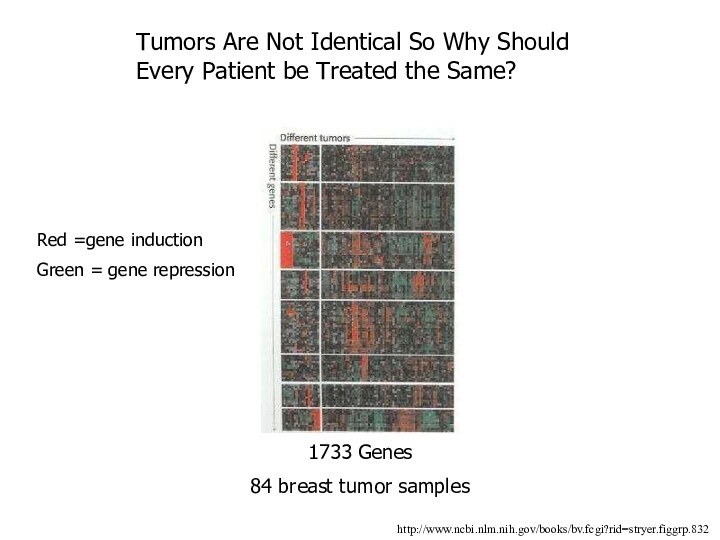
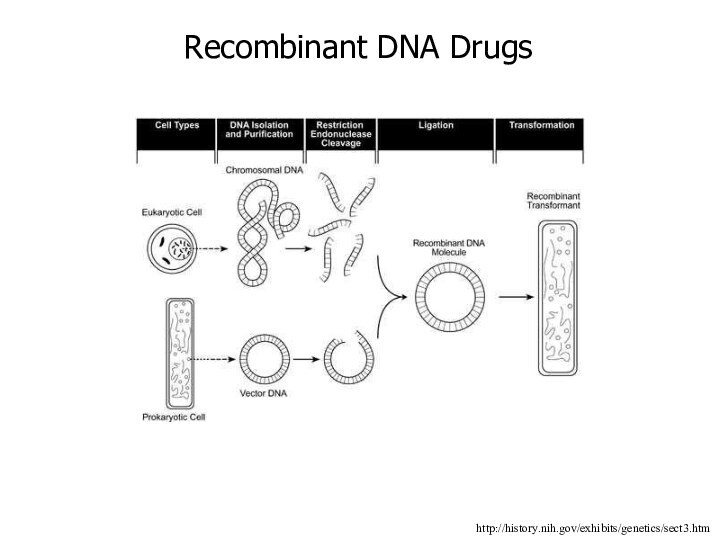
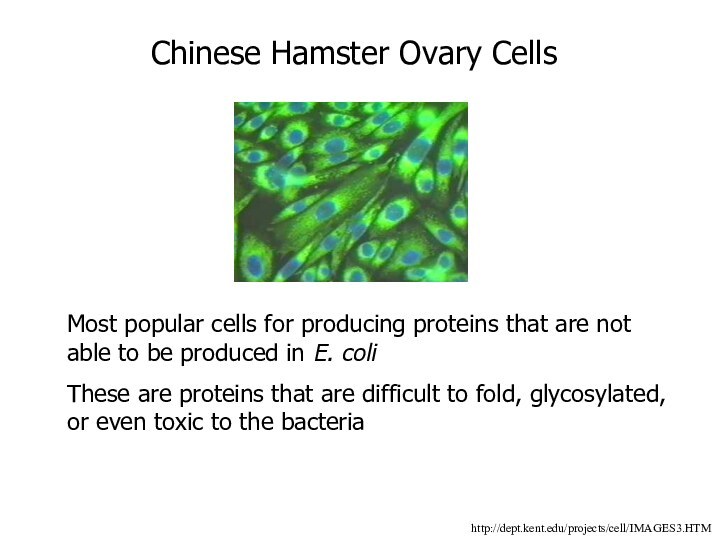

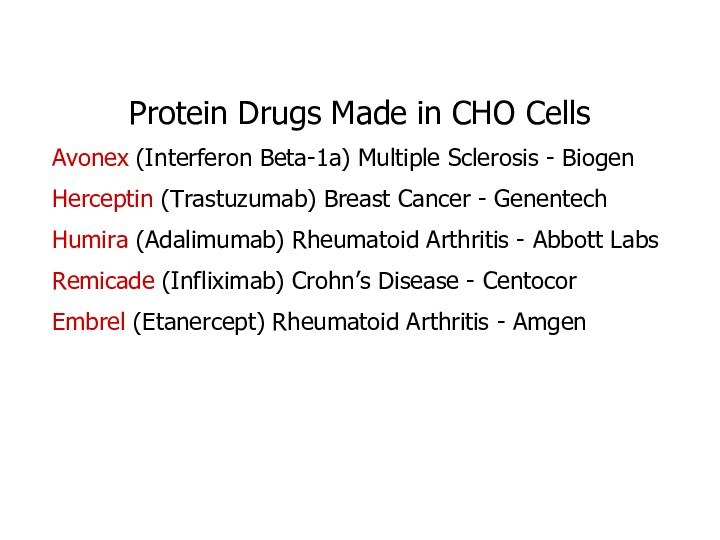
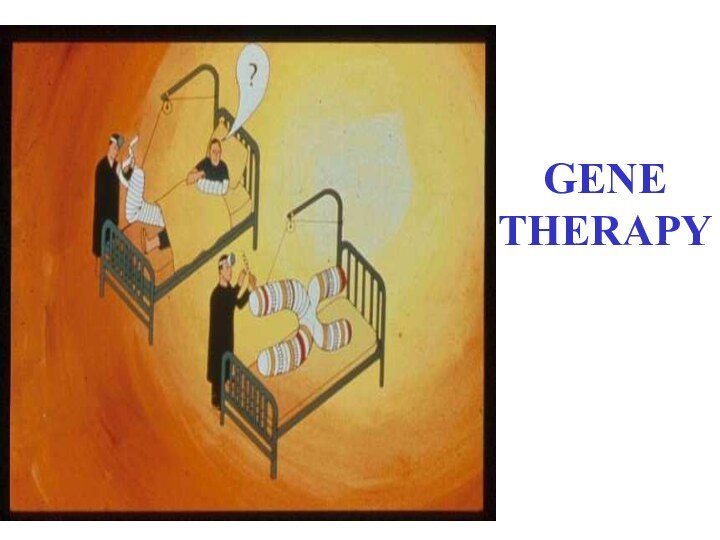
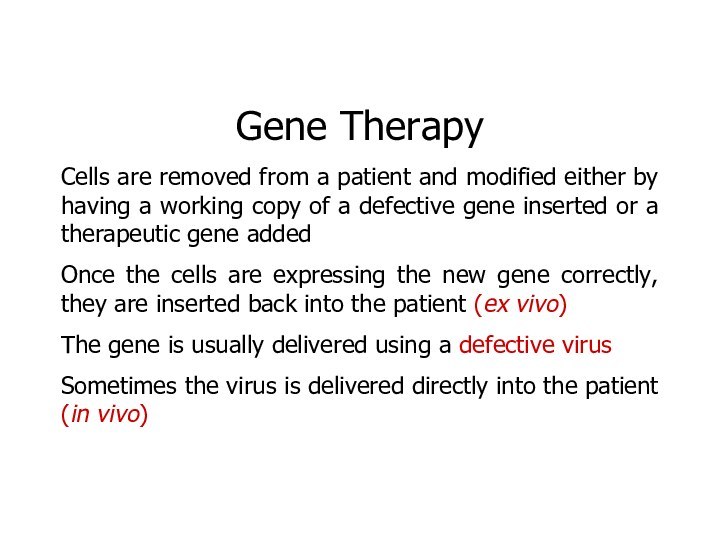

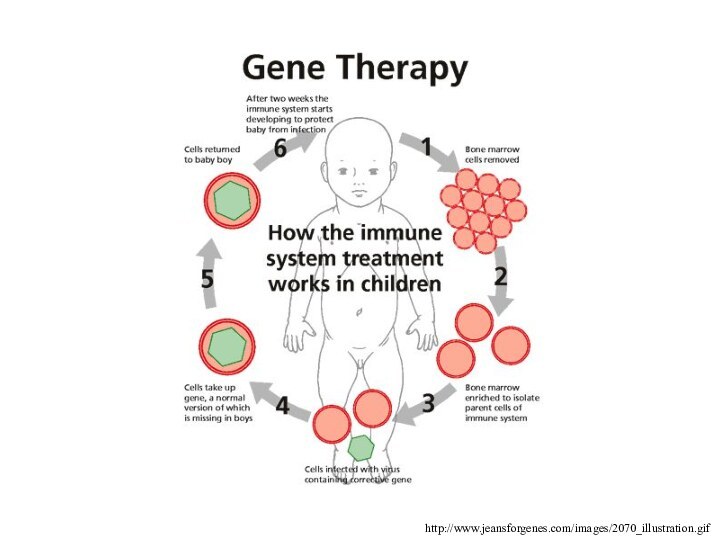
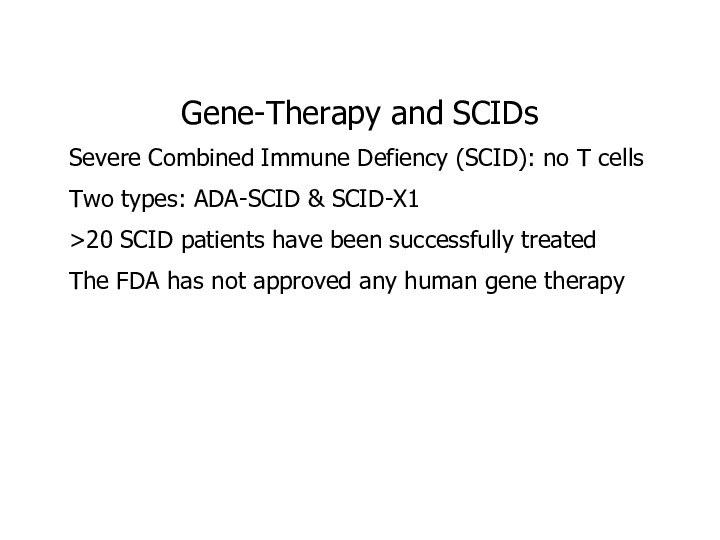
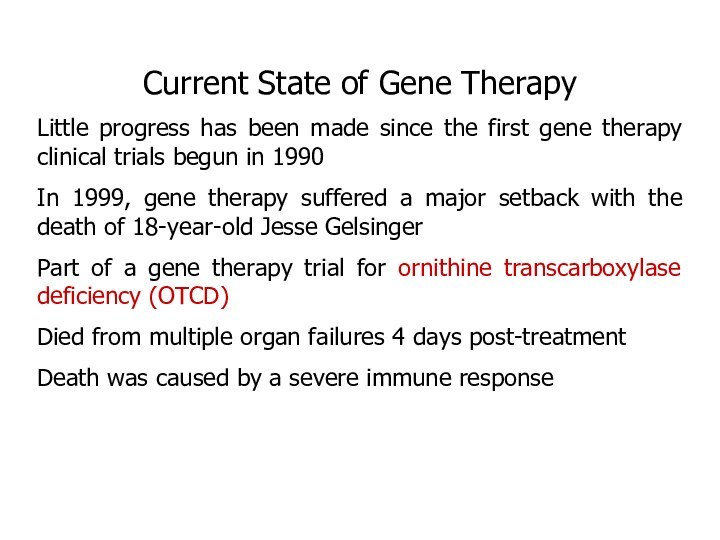
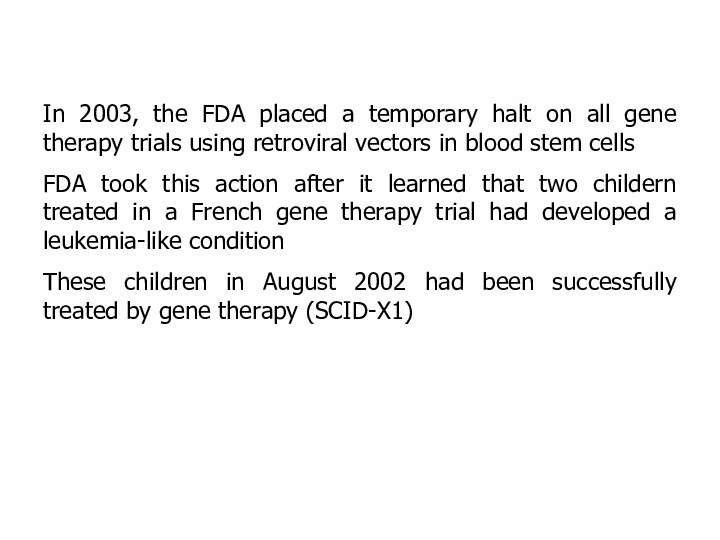
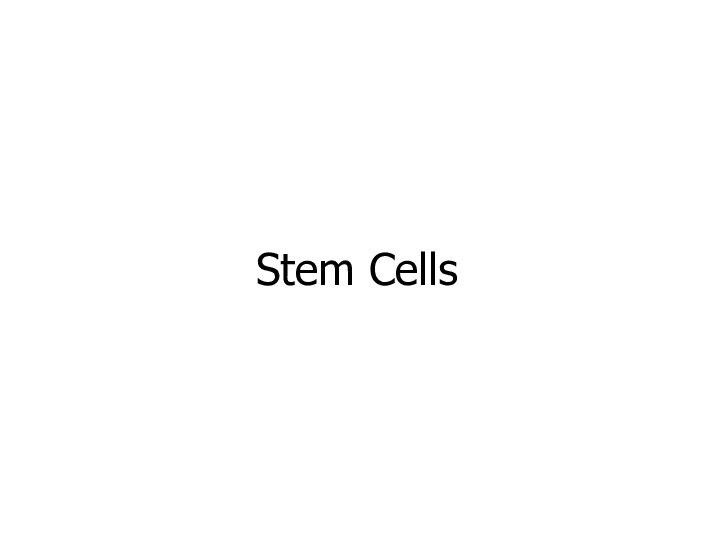
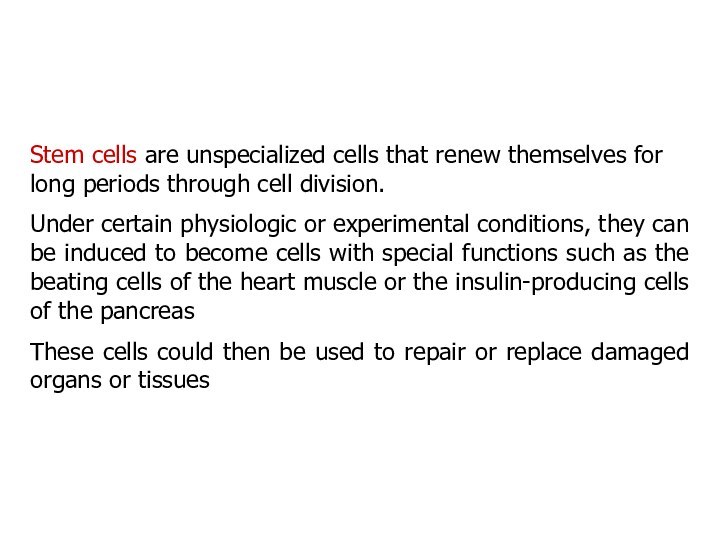
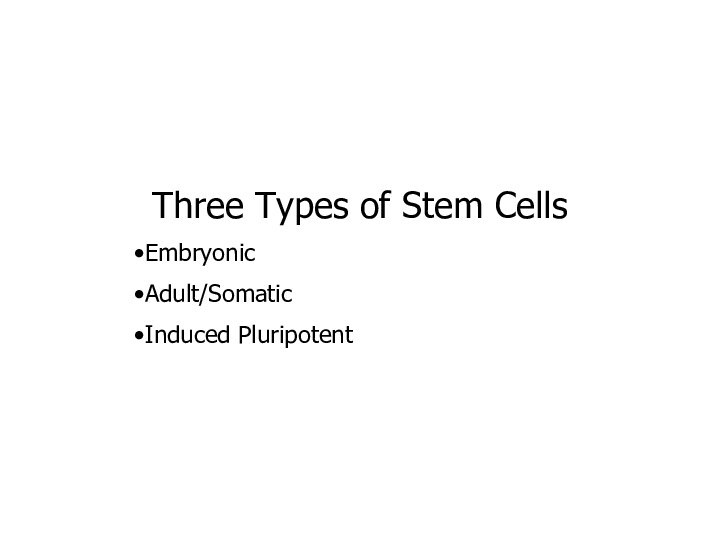

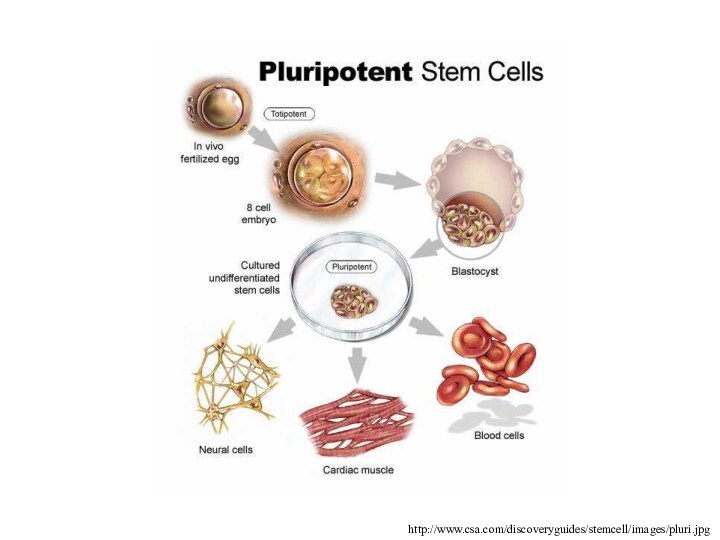
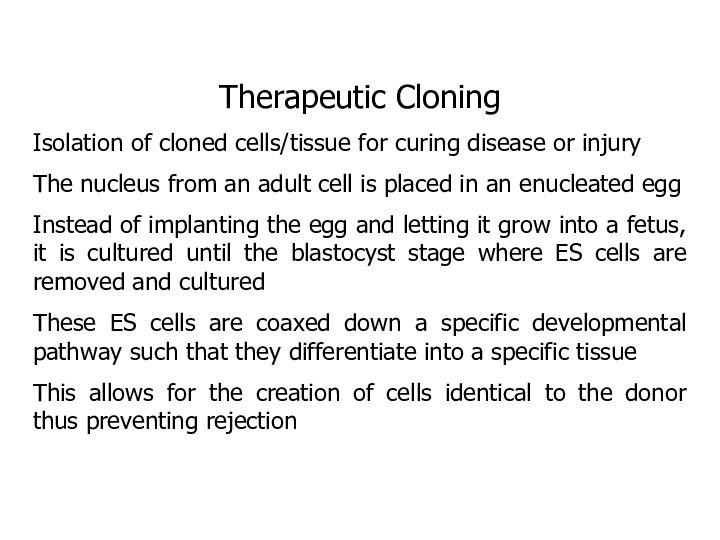
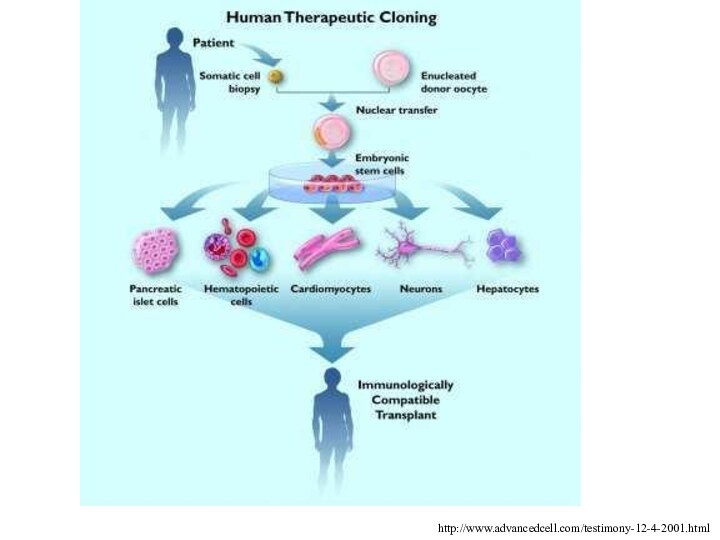
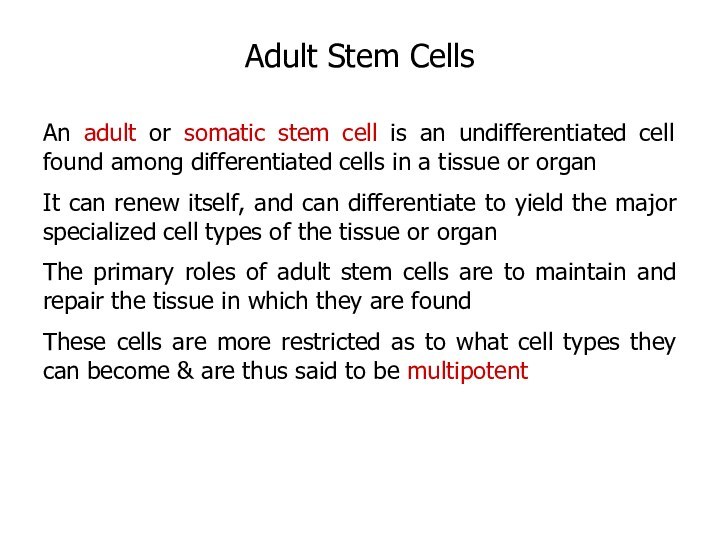
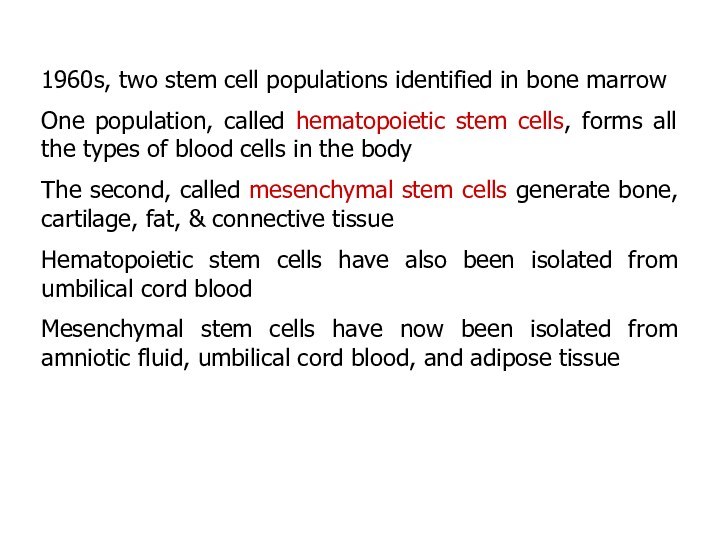
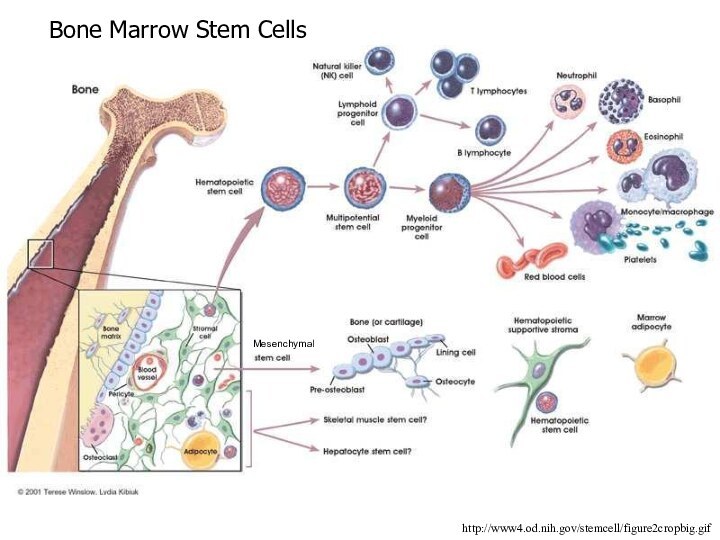
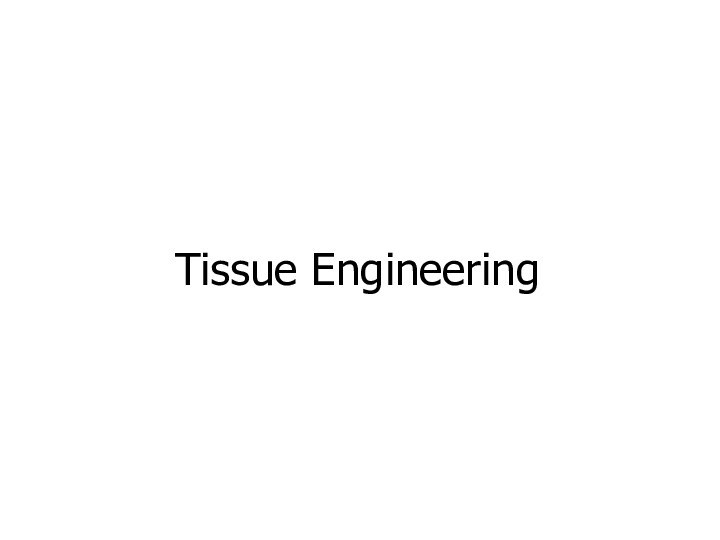

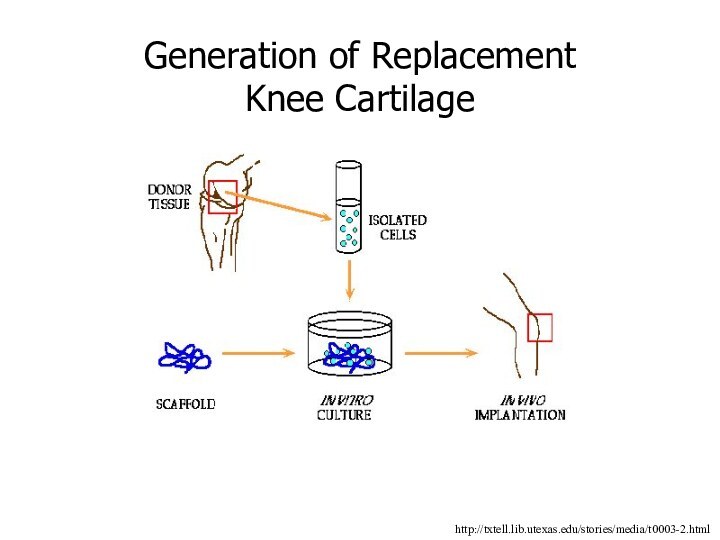
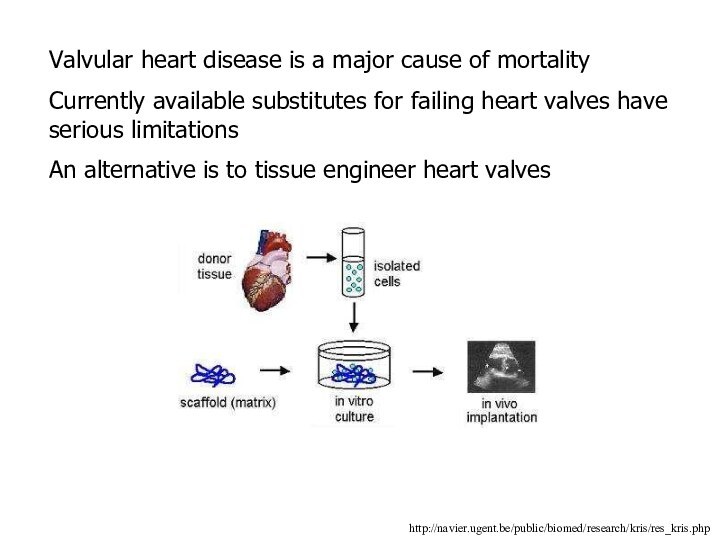
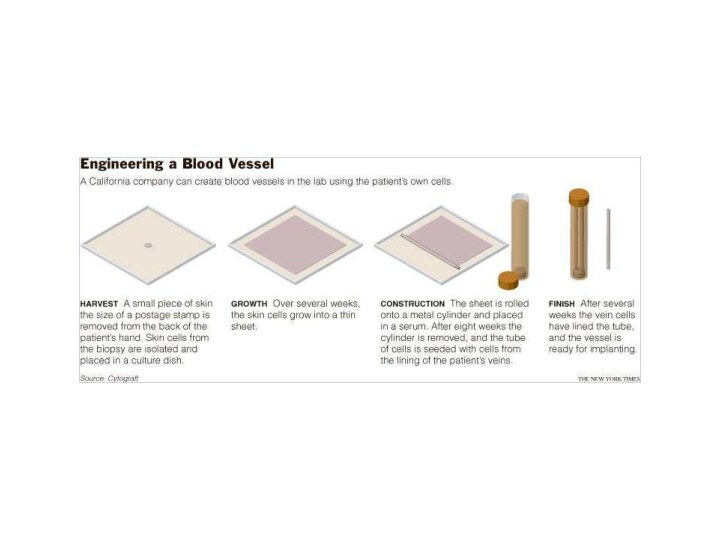
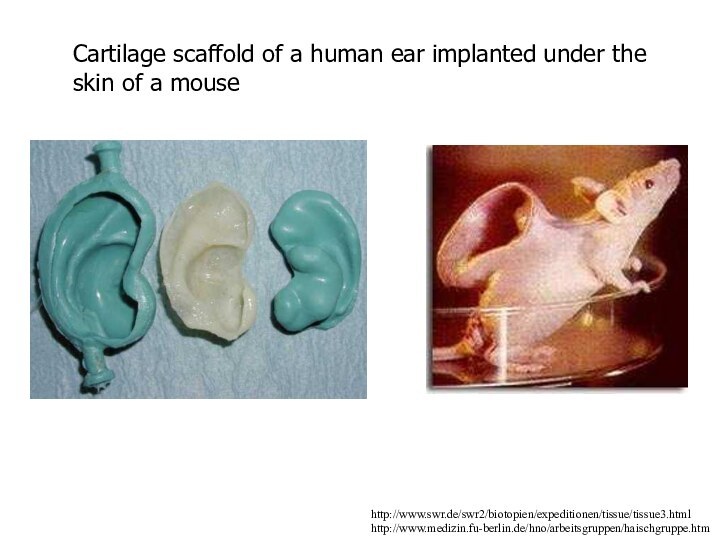
Слайд 4
Recombinant interferon: isolation of cDNA
Strategies for isolating either
the genes or cDNAs for human proteins
1) Isolate target
protein and determine partial AAc sequenceSynthesize oligo as probe to screen cDNA library
2) Generate Ab against purified proteins
Screen gene library
Interferon strategy above, pre-human genome sequence
6,000 clones
Слайд 5
Hybrid products: INF
Interferons assist the immune response
by inhibiting viral replication within host cells, activating natural
killer cells, increasing antigen presentation to lymphocytes, and inducing the resistance of host cells to
viral infection
IFN cDNA isolated early 80s
Now, three groups of IFN genes identified: , ,
IFN family of 13 genes; IFN family of 2 genes; IFN of 1 genes
IFN 1 and 2 have common RE sites
Hybrid INFs demonstrate potential therapeutics by combining functional domains
Some (2003)- successful clinical trials, approved for use as human therapeutic agents
Слайд 6
Site-specific directed mutagenesis: hGH
hGH: 191 AAc, 22,1
kDa
One of first therapeutic proteins approved for human use
Recombinant
form produced in E. coli, identical to native pituitary-derived hGHNative binds to growth hormone receptor and prolactin receptor
Side effects
Prolactin receptor binding function of Zn++ binding
Domain: His-18, His-21, Glu-174
2003, testing mutants
Слайд 7
Optimizing gene expression
Multistep process:
Design a protein, construct
a recombinant molecule, express and characterize
Need to optimize expression
First,
either prokaryote or eukaryote hostComparative analysis of host and expression
ex., interleukin-3 expression
Best in Bacillus licheniformis
Balance with glycosylation in eukaryotic hosts
But, glycosylation is not essential for interleukin-3 activity
Слайд 8
Cystic fibrosis
Genetic disease affecting lungs and digestive
system
Average life span 37 years, extended and extending
In US,
~1/3,900; 1/22 are carriersMost common in Europeans and Ashkenazi Jews
Cystic fibrosis transmembrane conductance regulator (CFTR)
Chloride ion channel, sweat, digestive juices and mucus
thick, sticky mucus to build up in the lungs and digestive tract
7q31.2 -> 180,000 bp gene, 1,480 AAc
Most common mutation DF508; 1,400 other mutations
DF508: missense, not folded correctly
Lungs susceptible to bacterial infection
Antibiotics treatment results in resistance and
combination with DNA from bacteria and leukocytes causes pulmonary problems (mucus)
wikipedia
Слайд 9
Treatment
Genentech: hDNase I in CHO cells
Not a
cure, but alleviates symptoms
Purified protein delivered via aerosol mist
to lungs of CF-Approved by FDA in 1994
Слайд 10
Optimizing treatment
Another symptom,
In response to bacteria in
lungs,
leukocytes cluster and lyse bacteria (and leukocytes)
Lysed leukocytes
release actinMonomeric actin binds DNase I very tightly and inhibits
Limits effectiveness
X-ray structure data suggested Ala-144 required for binding
or Tyr-65
Changing either to Arg decreases actin binding by 10,000x
Clinical efficacy of mutants to be determined (2003)
Слайд 11
Clearing the lungs 2 with alginate lyase
http://www.lsbu.ac.uk/water/hyalg.html
Alginate
produced by seaweeds, soil and marine bacteria
P. aeruginosa excretion
in lungs contributes to viscosity of mucusIn addition to DNase I treatment, alginate lysate can be used as therapeutic agent
Слайд 12
Cloning alginate lyase
Flavobacterium sp.
Clone bank in E.
coli
Screen by plating onto medium plus alginate
+/- Ca++
Ca++ +
alginate = cross-linked opaqueHydrolyzed alginate does not cross-link
Analysis and characterization of clones and alginate lyase
Слайд 13
Alginate lyase[s]
ORF 69,000 Da
Precursor of three alginate
lyases
-> 3,000 Da + 63,000 Da
63,000 Da lyses both
bacterial and seaweed alginates63,000 Da -> 23,000 Da seaweed effective+ 40,000 Da bacterial effective
Clone bacterial activity portion
Слайд 14
Optimization of activity
Increase expression of 40,000 Da
protein
PCR amplify and insertion behind strong promoter
B. subtilis plasmid,
fused to a B. subtilis a-amylase leader peptide, directs secretion and penicillinase gene promoter
Expressed and assayed for halo phenotype
Liquifies alginates produced by P. aeruginosa isolated from lungs of CF patients
2003, additional trials to determine if effective therapeutic agent
Слайд 15
Phenylketonuria (PKU)
Autosomal recessive genetic disorder in phenylalaniine
hydroxylase
Phe accumulation, decreases other ‘large, neutral AAc’ in brain,
needed for protein and neurotransmitter synthesis
Brain development; progressive mental retardation and seizures
Incidence ~1/15,000; varies: 1/4,500 Ireland and 1/100,000 Finland
12q22-q24.1
Macaque genome: PAH gene sequence identical to a human PKU mutation
wikipedia
Слайд 16
Phenylketonuria treatment[s]
Traditional treatment: diagnosis at birth or
prenatal
Controlled semi-synthetic diet with low levels of Phe
Possible treatment:
metabolism of PhePAH multienzyme complex, requiring cofactor
Phe ammonia lyase (PAL) converts Phe as well
Stable and does not require cofactor
To test concept, yPAL cloned and overexpressed in E. coli
Preclinical studies (2003) with mice deficient in PAL
See lower plasma levels of Phe when PAL injected or
administered as oral encapsulated enzyme
Слайд 17
Monoclonal antibodies (mAb) as therapeutic agents
Mouse mAb
OKT3 first to be approved by FDA
Immunosuppressive agent after
organ transplant in humans
Слайд 18
Antibody molecular structure
CDRs variable portions of the
protein, both H and L
Fc elicits immunological responses after
Ag-AbComplement cascade
Слайд 19
Polyclonal antibodies (Ab)
www.abbottdiagnostics.com/Science/pdf/learning_immunoassay_01.pdf
Слайд 20
Monoclonal antibodies (mAb)
www.abbottdiagnostics.com/Science/pdf/learning_immunoassay_01.pdf
Слайд 22
Monoclonal antibodies (mAb) protocol
www.abbottdiagnostics.com/Science/pdf/learning_immunoassay_01.pdf
Monoclonal Antibodies: A Manual
of Techniques. HZola
Слайд 23
Herceptin®
“Magic bullet”
Genentech. FDA 9/98; Aullrich/Genentech and DSlamon/UCLA
Jonsson Cancer Ctr
Trastuzumab (trade name Herceptin)
Humanized monoclonal antibody
Target is
HER2/neu receptor (erbB2)HER2-positive metastatic breast cancer
Anti-cancer therapy in breast cancer, over-expressing erbB2 receptor
ErbB2 receptor amplification occurs in 25-30% of early-stage breast cancers
Transmembrane Tyr kinase, activating PI3K/Akt pathway and MAP pathway
Overexpression promotes invasion, survival and angiogenesis of cells
Also confers therapeutic resistance to cancer therapies
Herceptin binds to extracellular domain of erbB2 receptor,
Arresting cell at G1 phase
wikipedia
Слайд 24
Magic bullet: delivery of drug to site
Binding
of mAb requires second step
1) delivery of drug
2) delivery
of enzyme to convert pro-drug
Слайд 25
Magic bullet: delivery of active agent to
site
Binding of mAb requires second step
variations
Слайд 27
Human mAb problem
Drawbacks to immunotherapeutic agents use
Chemical
couplings problem
Yields low; coupling at random sites; chemical portion
may inactive attached enzymeNonhuman mAb
If condition requires multiple treatments, nonhuman mAb causes immune response
Human mAb
Human chromosomes of fused human lymphocyte-mouse myeloma cells are unstable
No human myeloma cell line can replace mouse myeloma cell line
Ethics of injecting human subject to generate Ab-producing cells and doing partial splenectomy
to collect Ab-producing cell
www.abbottdiagnostics.com/Science/pdf/learning_immunoassay_01.pdf
Слайд 28
Hybrid human-mouse mAb: chimeric
Genetic engineering to convert
mouse mAb into a hybrid
Exchange Fc portions
Using oligonucleotides and
in vitro DNA replication or cloned segmentsConstruct in expression vector; transfect into cultured B lymphocytes
Chimeric Abs are 70% human/30% mouse
Слайд 29
Hybrid human-mouse mAb: chimeric
Ex., chimera of mouse
mAb against surface of human colon cancer cells
Tested in
patients with colorectal cancerHalf-life in blood system 6x longer
1/10 patients developed mild response against chimera
But, no anti-tumor activity observed (2003)
Low dosage and/or advanced state of the cancer?
Слайд 31
Hybrid human-mouse mAb: humanized
Humanized Ab
Substitute CDRs into
human Ab
95 %human/5 % mouse
Construction by isolating cDNAs for
L and H chainsAmplify variable regions using PCR protocol
Primers are complementary to ends of variable regions, conserved
CDRs are highly variable sequences
Слайд 32
PCR amplification of CDR
Primers are hybrids, with
12
bases at ends corresponding to human mAb L chain
cDNAsSix pairs of primers: 3 for VL and 3 for VH
PCR protocol to splice these segments into human Ab, replacing CDRs
2003. 50 different mAbs have been humanized
Technology is effective and widely applicable
Time-consuming and expensive procedure
Слайд 33
E. coli production of mAb: phage display
Protocol
for creating phage combinatorial libraries
Hybridoma cells grow slowly, do
not reach high cell densities, expensive to maintainBioreactors: bacteria, plants and animals
Слайд 34
DNA constructs of Fv combinatorial gene library
Lambda
phage
Clones each L and H into two separate libraries
Cut
with common REDirectionally clone into third library: H -> L
Combinations random
RBS= ribosome binding site
Слайд 35
Combinatorial library in M13
PCR amplify VH and
VL separately
Add linker
Ligate into M13 genome
Displays on surface
Слайд 36
Phage Display
Display peptide or protein on surface of
bacterial virus
(in principle can use other viruses but
phage viruses easiest to prepare etc.)Some proteins on viral coats can accommodate peptides or proteins and
will present them on the surface.
The phage genome (or alternatively phagemid) contains the sequence for the protein or peptide so isolation of the phage with desired phenotype will also provide the genotype.
Most popular is filamentous phage f1 or M13.
pIII on the end or pVIII along the length of the rod-like virion
for pVIII ~10% can be loaded with alternate peptide
Advantage of phage display: easy to screen over 109 sequences
Can either clone library directly into phage genome
or use a phagemid (plasmid that contains f1 ori) with replication
deficient helper phage
Слайд 37
http://www.biochem.unizh.ch/plueckthun/teaching/Teaching_slide_shows/filamentous_phages/index.htm
5 copies of pIII and pVI 2800 copies
pVIII - all can accommodate
peptides
Слайд 39
Combinatorial library in M13
Assay expressed mAb by
Immunological
screening
ELISA-like system
Multiwell plate coated with target Ag
Bind, wash
Score with
chromogenic substrate cleaved by Ab-enzyme complex
Слайд 40
Shuffling CDR sequences
Very large libraries yield wider
range of Abs
B cells from several non-immunized individuals collected
and pooledmRNA isolated; cDNA synthesized
PCR amplify all six CDR regions separately
Pool with oligos encoding the framework regions and linker
Overlap extension PCR gives variable L and H domains
At 2x109 different single-chain Ab
Слайд 41
Using PCR to Detect for HIV
RT-PCR (reverse transcriptase
PCR).
HIV has a ssRNA genome.
Lyse plasma cells from the
potentially infected person to release HIV RNA genome.The RNA is precipitated using isopropanol.
Reverse transciptase is used to make a cDNA copy of the RNA of the virus.
This cDNA is used as a template to make dsDNA.
Diagnostics
Слайд 43
Using PCR to Detect for HIV
Specific primers are
used to amplify a 156 bp portion of the
HIV gag gene.Using standards the amount of PCR product can be used to determine the viral load.
PCR can also be used as a prognostic tool to determine viral load.
This method can also be used to determine the effectiveness antiviral therapy.
Слайд 44 Polymorphic refers to the existence of two or
more forms of the same gene, or genetic marker
Each
form must be too common in a population to be merely attributable to a new mutationOne type of polymorphism, Single Nucleotide Polymorphisms (SNPs), can be used as a diagnostic tool
Gene polymorphism
Слайд 45 SNPs are the 3.2 million single nucleotide changes
that differ between genomes
Most SNPs occur outside of genes,
but some occur in gene promoters & a few occur in genes themselvesFor SNPs to be useful, a person's DNA must be examined for the presence of specific SNPs
Слайд 47
How do we identify SNPs?
DNA microarrays (DNA chips)
make it possible to examine person for the presence
of specific SNPs quickly and affordablyA single microarray can now be used to screen 100,000 SNPs found in a patient's genome in a matter of hours
Слайд 48
How Are Microarrays Made?
Short fragments of DNA (oligonucleotides)
corresponding to each version of all known SNPs are
spotted onto a glass slide in a known orderA patients DNA is fragmented and each fragment is linked to a fluorescent dye
This pool of fragments is allowed to hybridize to its corresponding oligonucleotide on the chip
The pattern of fluorescence determines which SNPs are found in the patient
Слайд 50
Whole Human Genome Microarray by Agilent Technologies
1” x
3” glass slide with 44,000 genes dotted
Слайд 52 A person’s susceptibility to disease is linked to
which alleles they carry as well as how those
alleles interact with the environmentSNPs can be used to build a profile of a person’s susceptibility to various diseases
Example:
Craig Venter (Celera genomics) has an increased risk of heart attack based on a SNP in the promoter of the MMP-3 gene
Слайд 56
Average patient
There is no simple way to determine
how particular patient will respond to a medication
Adverse
Drug Reactions (ADRs) one of the important causes of hospitalization and death in the United StatesMedical drugs are developed using a ”average” patient
Pharmacogenomics examines the DNA variations that is correlated to drug response
Can be used to predict if a patient will have a good response to a drug, a bad response to a drug, or no response at all
1http://www.fda.gov/CDER/drug/drugReactions/default.htm
Слайд 59
Testing for Variation
Cytochrome p450 (CYP450) involved in drug
metabolism Four major types; CYP3A, CYP2C9, CYP2D6 & CYP2C19
Variations in at least 3 genes regulate drug metabolism
By looking at the alleles a person has of these genes it is possible to predict how a patient will react to a drug
Dosing can be regulated so that a patient gets the maximum benefit without possible toxic side effects
Слайд 60
CYP3A CYP2D6
Antihistamines Codeine
Statins Beta-Blockers
Ca+ Channel Blockers Tricyclic Antidepressants
Benzodiazepines Tamoxifen
HIV protease inhibitors
CYP2C9 CYP2C19 (Missing
in 30% of Asians)
NSAIDs Proton pump inhibitors
Anti-epileptics
ValiumWarfarin
CYP Genes & Their Metabolites
Слайд 61 Herceptin targets HER2 & is effective in stopping
breast cancer growth
Only 25 to 30% of breast cancers
overexpress HER2Erbitux effective in colorectal cancers by stopping signaling through EGFR
Not all colorectal cancers overepress EGFR
Diagnostic tests are used to detect which tumors will benefit from treatment allowing better use of treatment time & money
Слайд 62
1733 Genes
84 breast tumor samples
http://www.ncbi.nlm.nih.gov/books/bv.fcgi?rid=stryer.figgrp.832
Red =gene induction
Green
= gene repression
Tumors Are Not Identical So Why Should
Every Patient be Treated the Same?
Слайд 64
http://dept.kent.edu/projects/cell/IMAGES3.HTM
Chinese Hamster Ovary Cells
Most popular cells for producing
proteins that are not able to be produced in
E. coliThese are proteins that are difficult to fold, glycosylated, or even toxic to the bacteria
Слайд 66
Protein Drugs Made in CHO Cells
Avonex (Interferon Beta-1a)
Multiple Sclerosis - Biogen
Herceptin (Trastuzumab) Breast Cancer - Genentech
Humira
(Adalimumab) Rheumatoid Arthritis - Abbott LabsRemicade (Infliximab) Crohn’s Disease - Centocor
Embrel (Etanercept) Rheumatoid Arthritis - Amgen
Слайд 68
Gene Therapy
Cells are removed from a patient and
modified either by having a working copy of a
defective gene inserted or a therapeutic gene addedOnce the cells are expressing the new gene correctly, they are inserted back into the patient (ex vivo)
The gene is usually delivered using a defective virus
Sometimes the virus is delivered directly into the patient (in vivo)
Слайд 71
Gene-Therapy and SCIDs
Severe Combined Immune Defiency (SCID): no
T cells
Two types: ADA-SCID & SCID-X1
>20 SCID patients
have been successfully treatedThe FDA has not approved any human gene therapy
Слайд 72
Current State of Gene Therapy
Little progress has been
made since the first gene therapy clinical trials begun
in 1990In 1999, gene therapy suffered a major setback with the death of 18-year-old Jesse Gelsinger
Part of a gene therapy trial for ornithine transcarboxylase deficiency (OTCD)
Died from multiple organ failures 4 days post-treatment
Death was caused by a severe immune response
Слайд 73 In 2003, the FDA placed a temporary halt
on all gene therapy trials using retroviral vectors in
blood stem cellsFDA took this action after it learned that two childern treated in a French gene therapy trial had developed a leukemia-like condition
These children in August 2002 had been successfully treated by gene therapy (SCID-X1)
Слайд 75 Stem cells are unspecialized cells that renew themselves
for long periods through cell division.
Under certain physiologic
or experimental conditions, they can be induced to become cells with special functions such as the beating cells of the heart muscle or the insulin-producing cells of the pancreasThese cells could then be used to repair or replace damaged organs or tissues
Слайд 77 In 1998, human embryonic stem cells (hES) were
isolated and grown in the laboratory
hES cells are derived
from the ICM of human blastocystsThese cells are pluripotent just like mouse ES cells
The embryos used in these studies were created for infertility purposes through in vitro fertilization
They were donated for research with the informed consent of the donor
Human Embryonic Stem Cells
Слайд 79
Therapeutic Cloning
Isolation of cloned cells/tissue for curing disease
or injury
The nucleus from an adult cell is placed
in an enucleated eggInstead of implanting the egg and letting it grow into a fetus, it is cultured until the blastocyst stage where ES cells are removed and cultured
These ES cells are coaxed down a specific developmental pathway such that they differentiate into a specific tissue
This allows for the creation of cells identical to the donor thus preventing rejection
Слайд 81 An adult or somatic stem cell is an
undifferentiated cell found among differentiated cells in a tissue
or organIt can renew itself, and can differentiate to yield the major specialized cell types of the tissue or organ
The primary roles of adult stem cells are to maintain and repair the tissue in which they are found
These cells are more restricted as to what cell types they can become & are thus said to be multipotent
Adult Stem Cells
Слайд 82 1960s, two stem cell populations identified in bone
marrow
One population, called hematopoietic stem cells, forms all the
types of blood cells in the bodyThe second, called mesenchymal stem cells generate bone, cartilage, fat, & connective tissue
Hematopoietic stem cells have also been isolated from umbilical cord blood
Mesenchymal stem cells have now been isolated from amniotic fluid, umbilical cord blood, and adipose tissue
Слайд 85 Tissue engineering or regenerative medicine is a multidisciplinary
field combining biology, medicine, and engineering & involving the
restoration, maintenance, or enhancement tissue & organ functionOften involves the growth of new tissue or organs within a 3D matrix to mimic natural organ growth
http://www2.mahidol.ac.th/spectrum/pic3_vol10_no3.gif
Слайд 86
http://txtell.lib.utexas.edu/stories/media/t0003-2.html
Generation of Replacement Knee Cartilage
Слайд 87
http://navier.ugent.be/public/biomed/research/kris/res_kris.php
Valvular heart disease is a major cause of
mortality
Currently available substitutes for failing heart valves have serious
limitationsAn alternative is to tissue engineer heart valves





